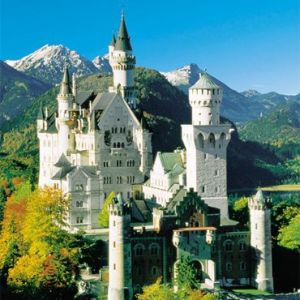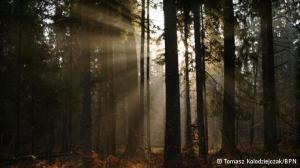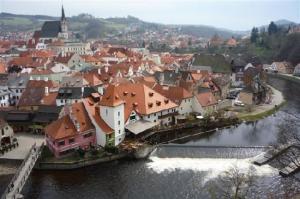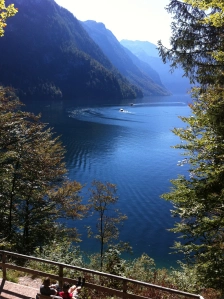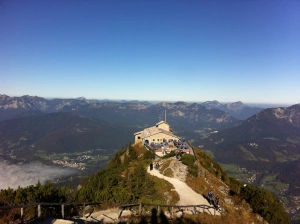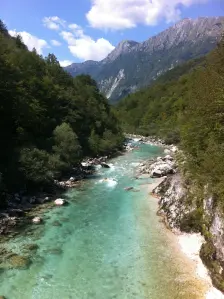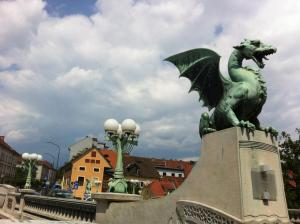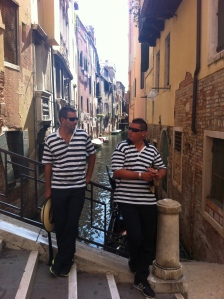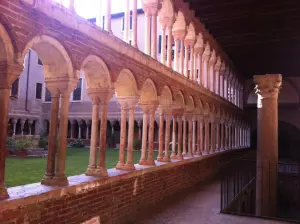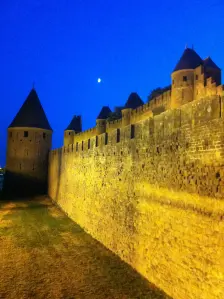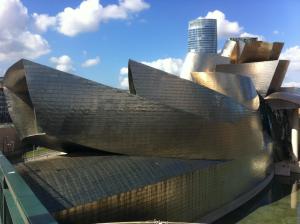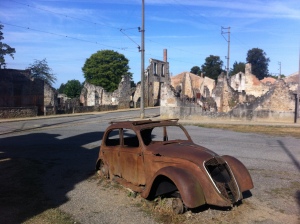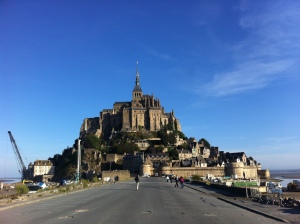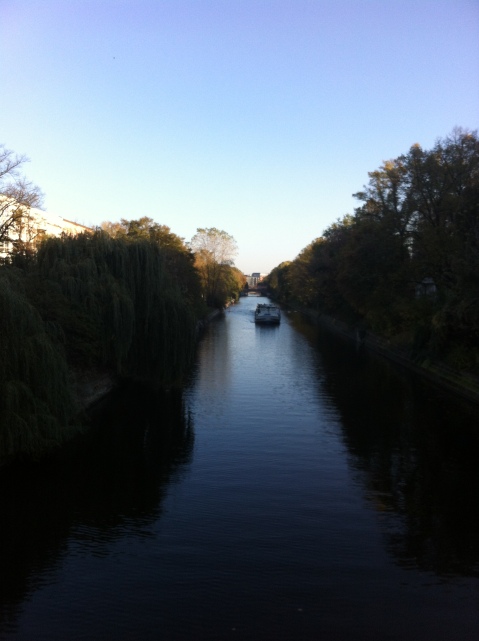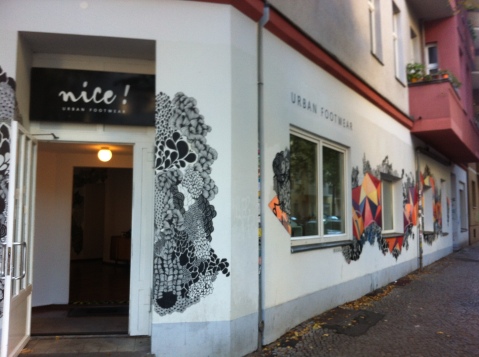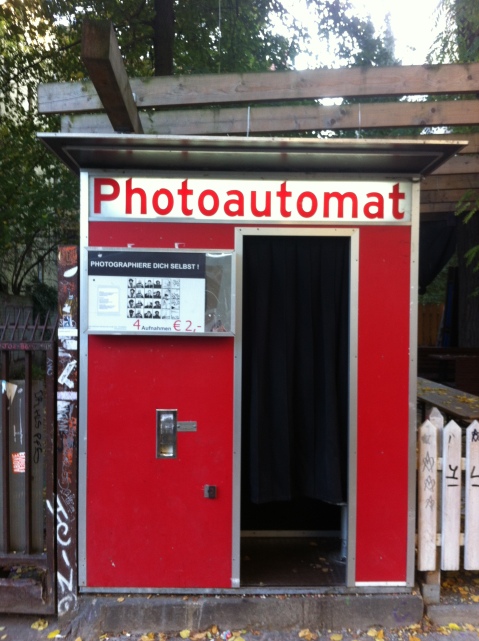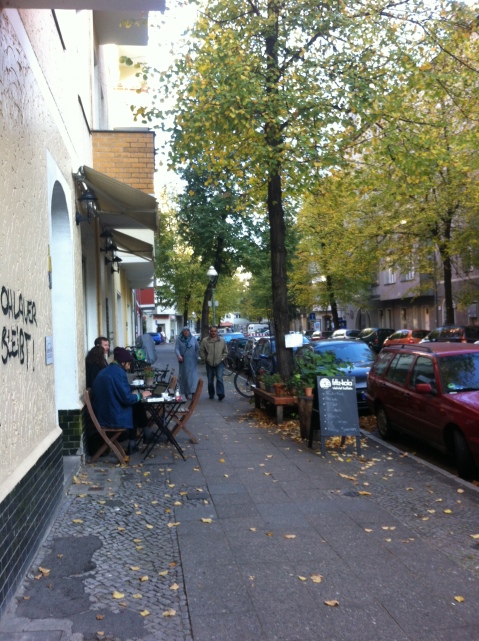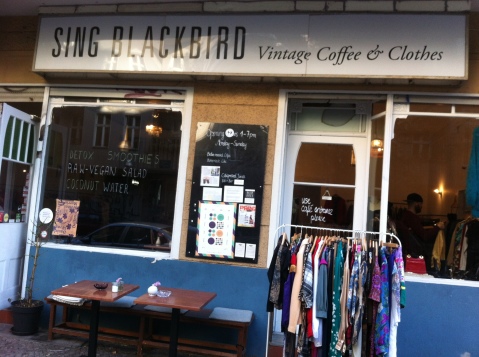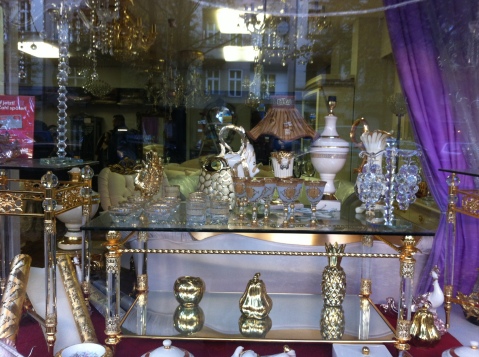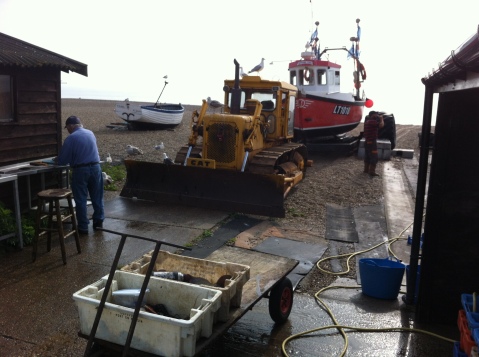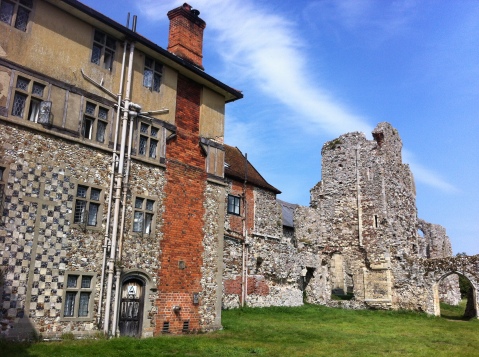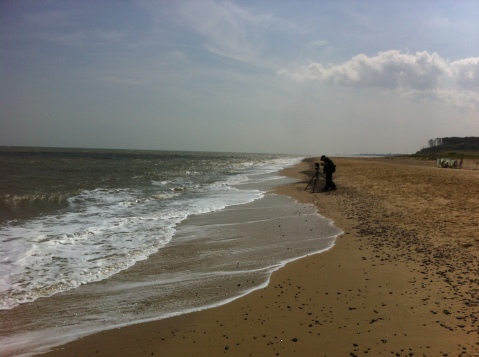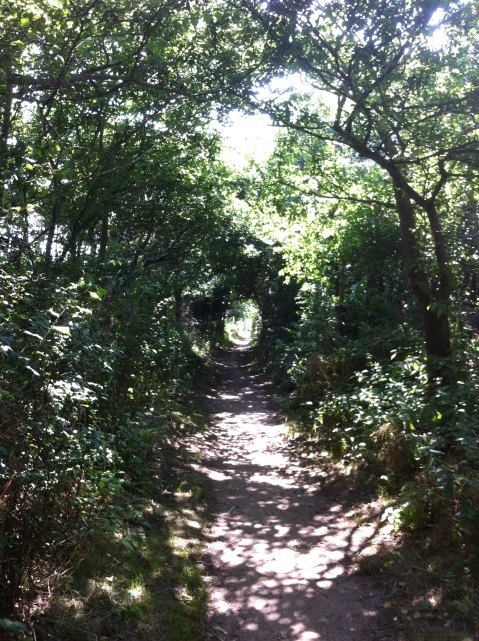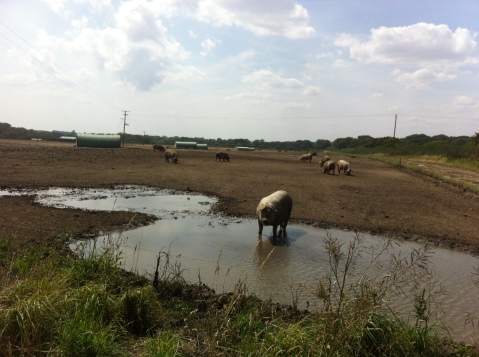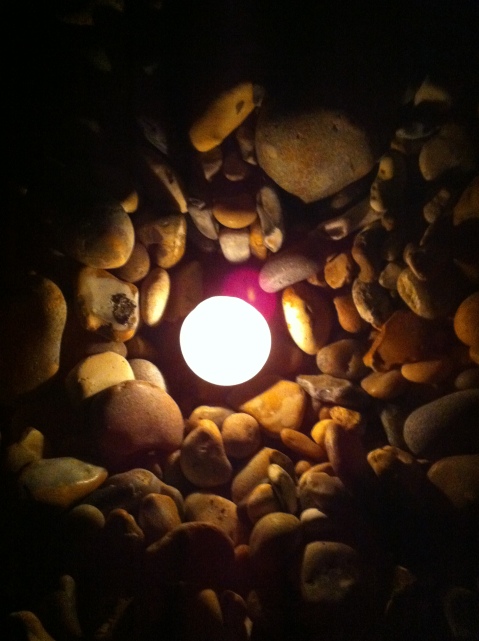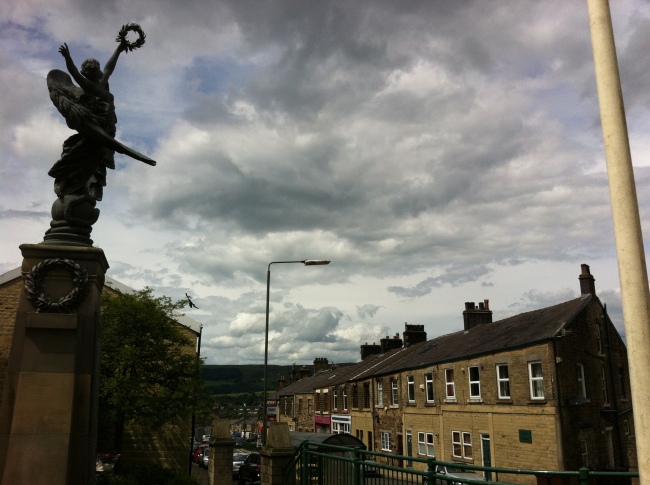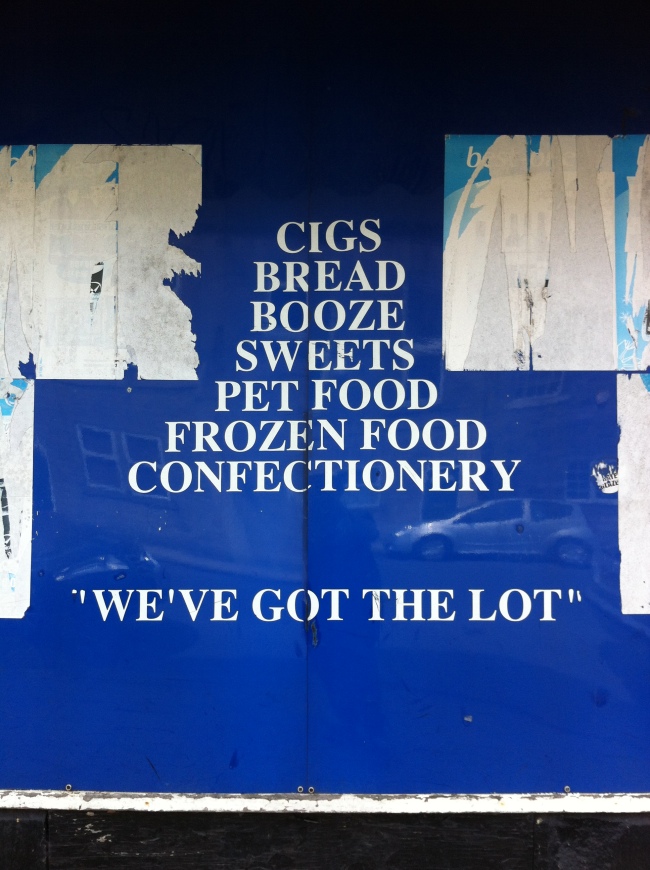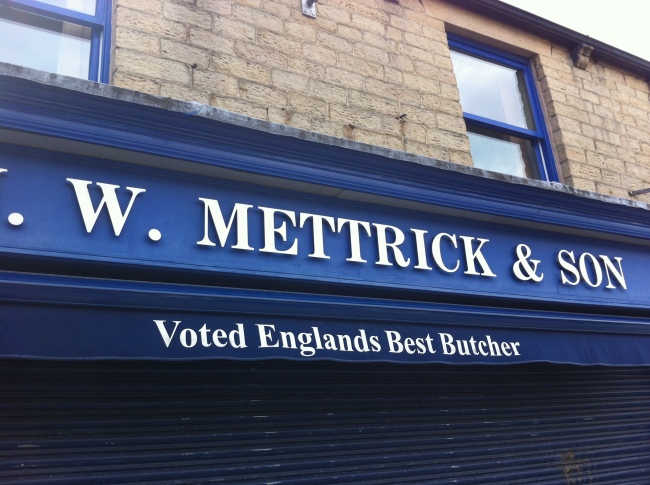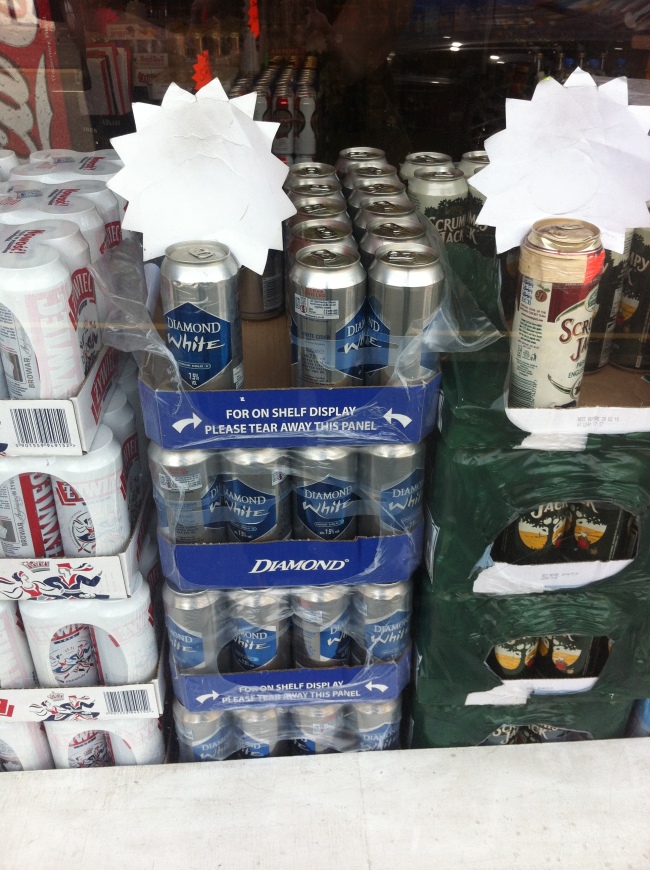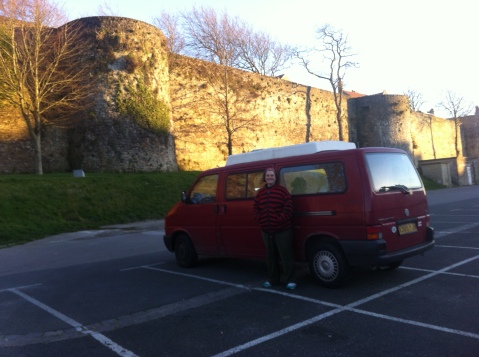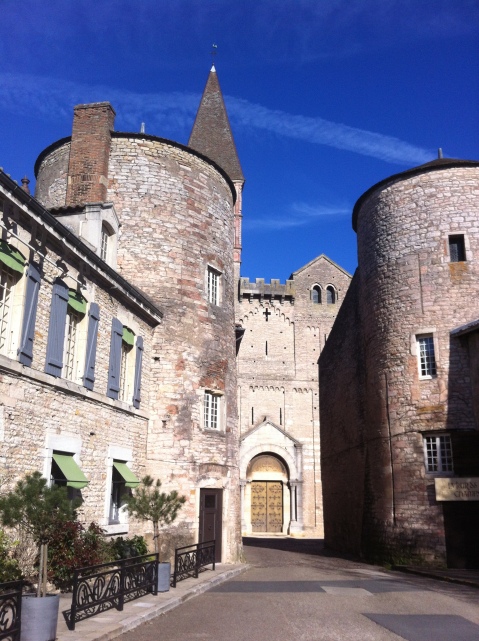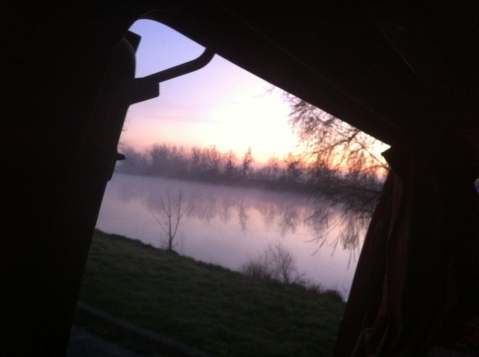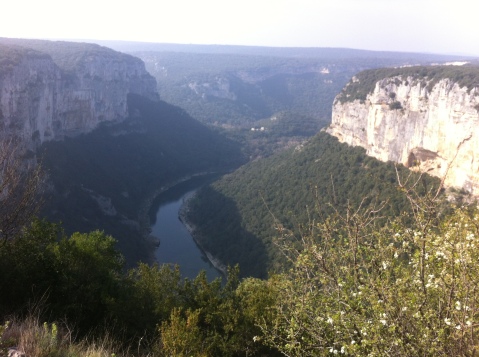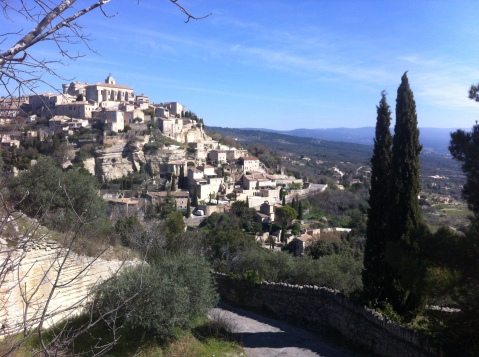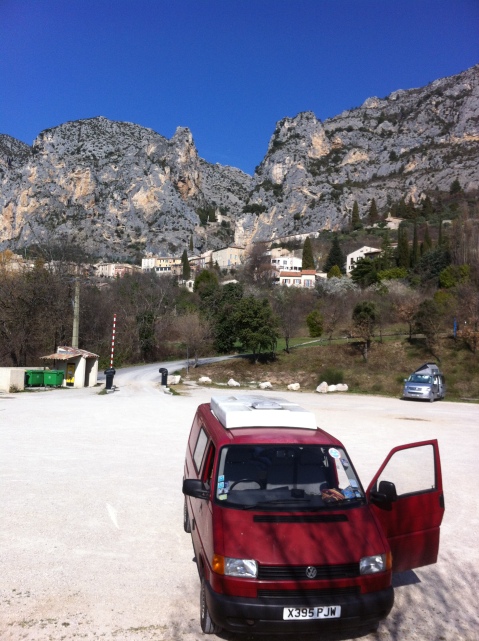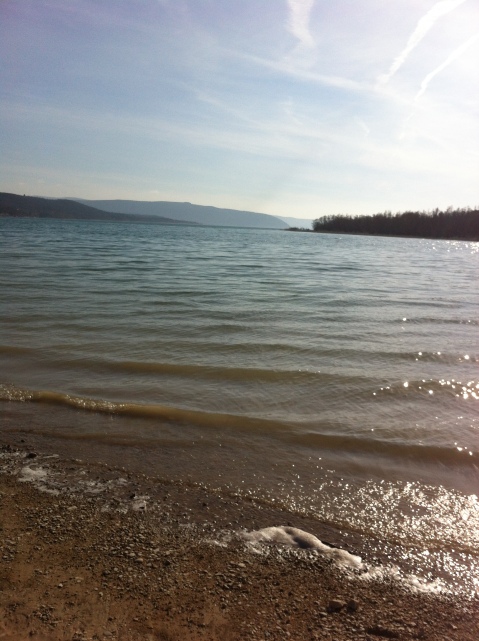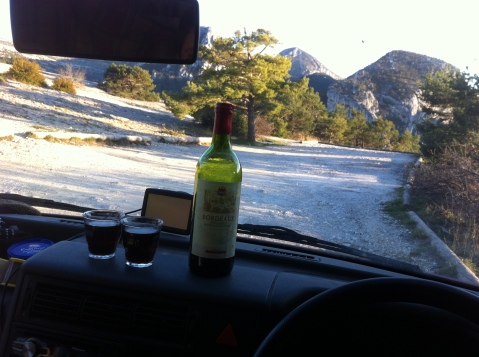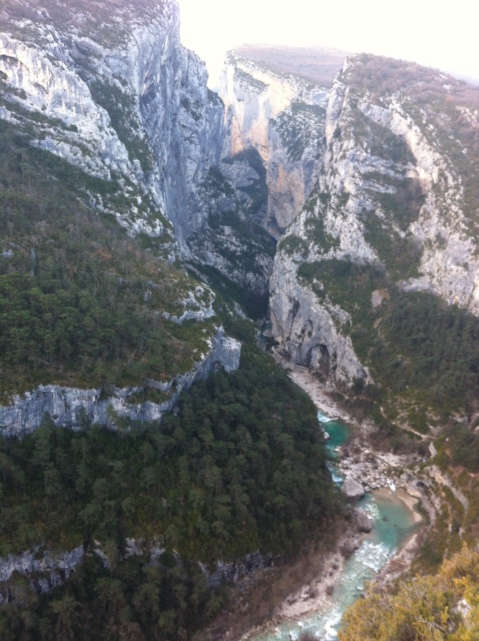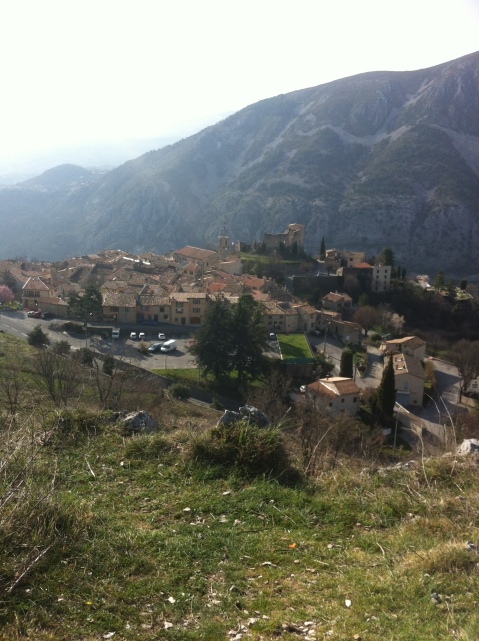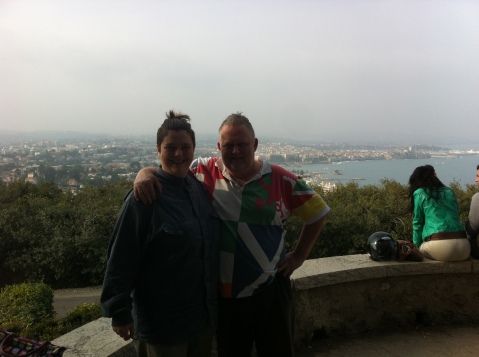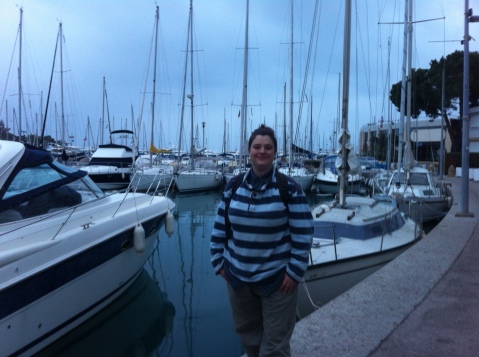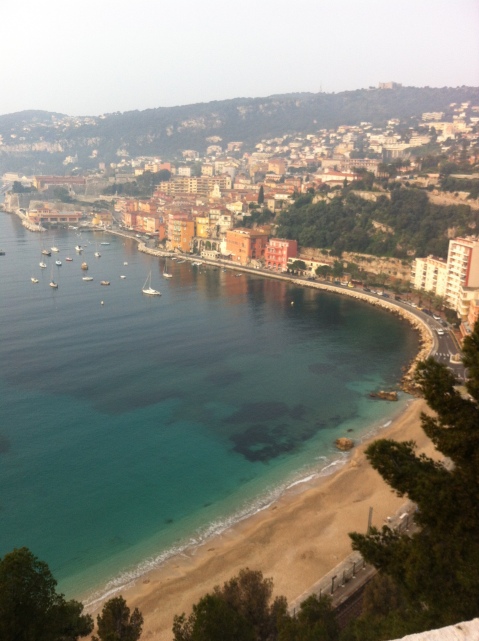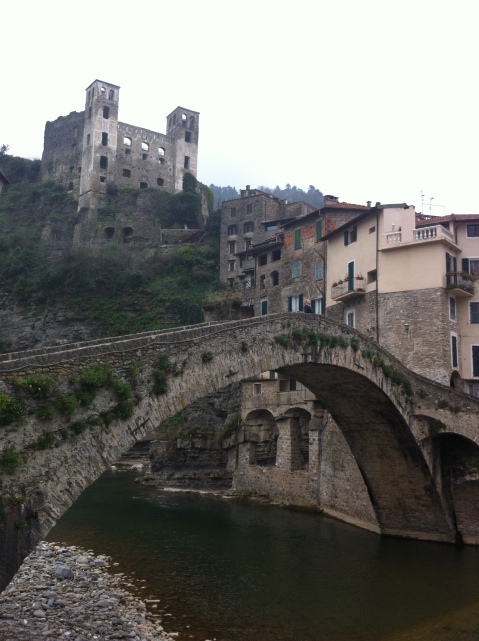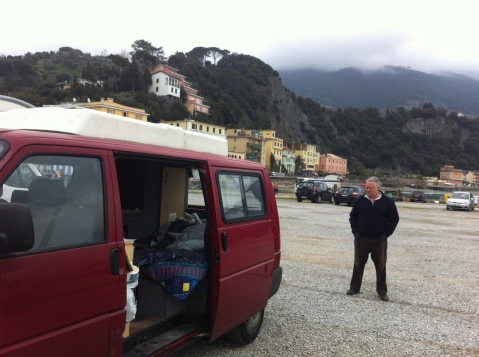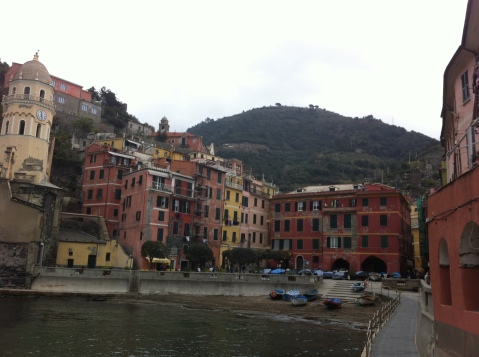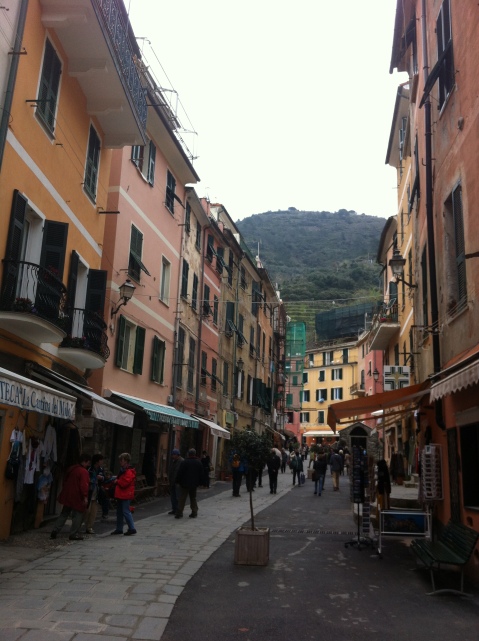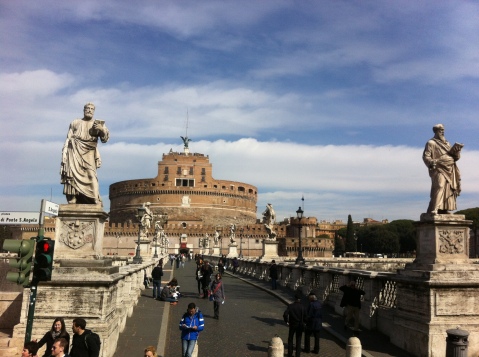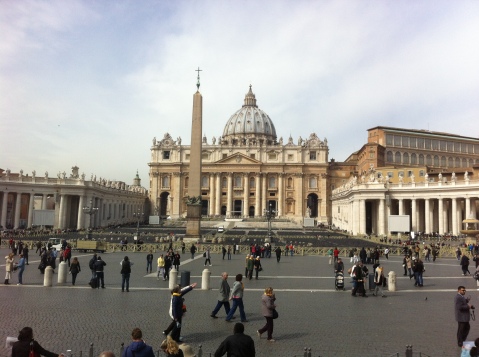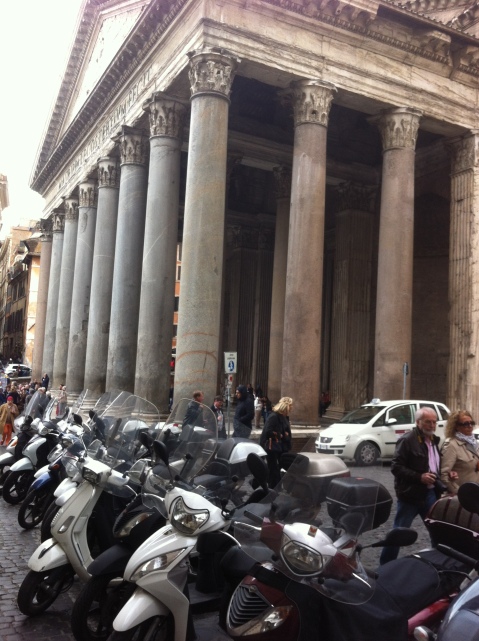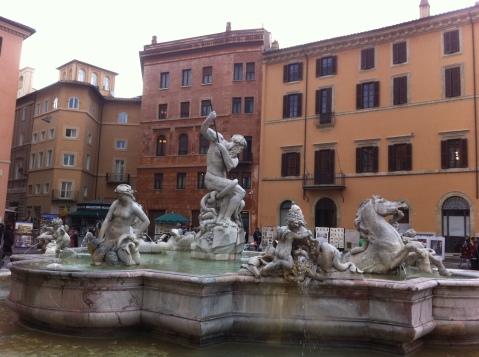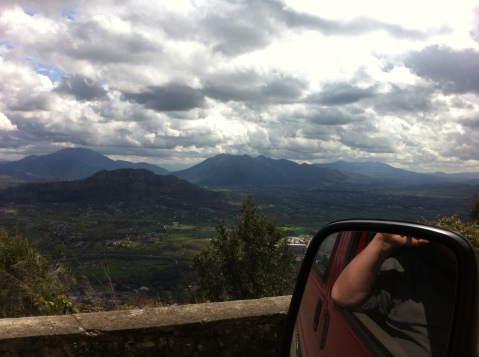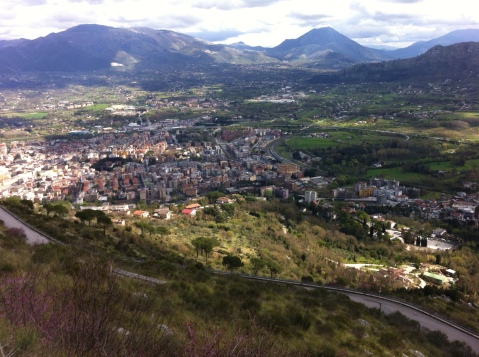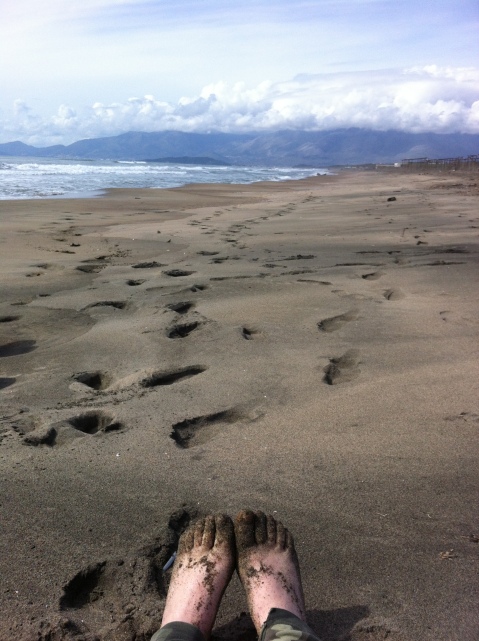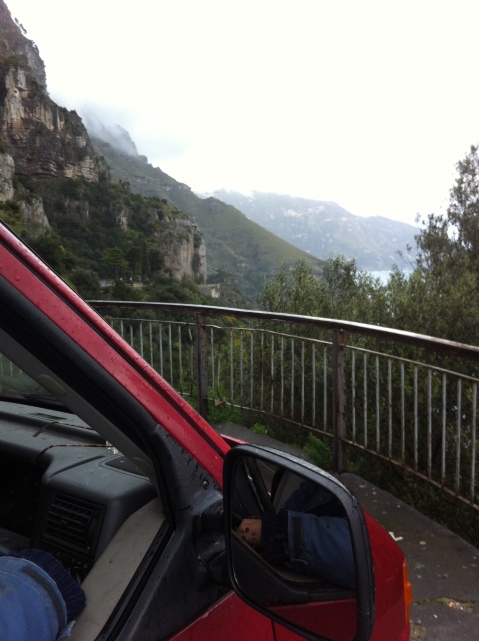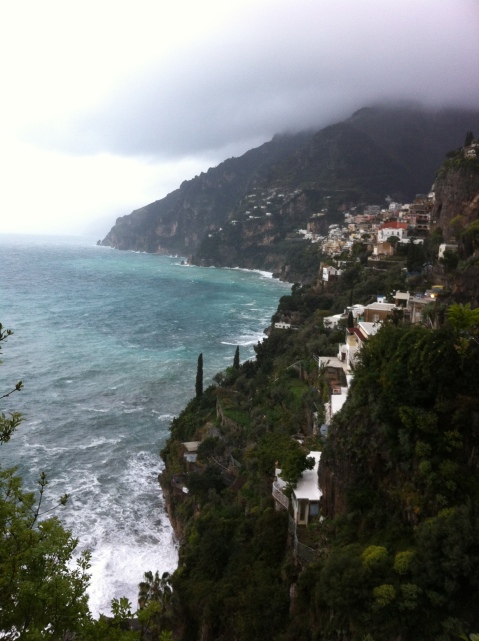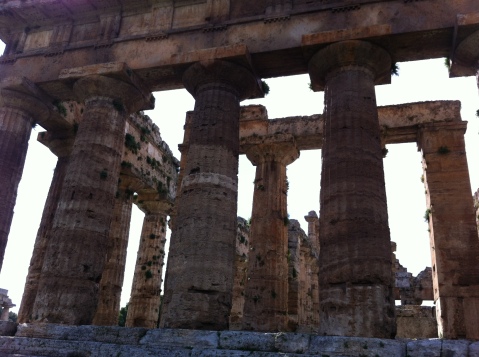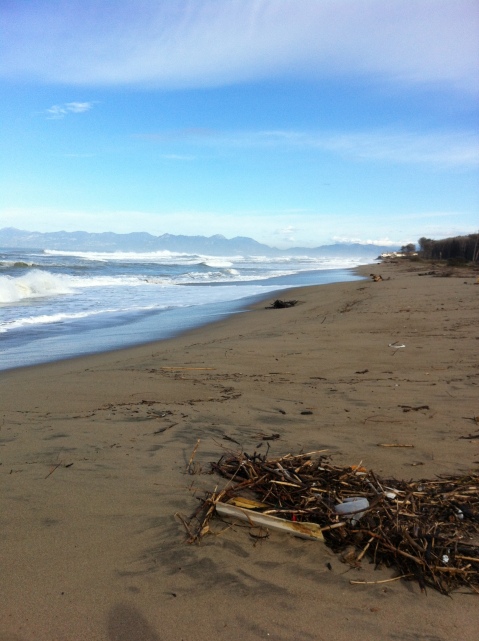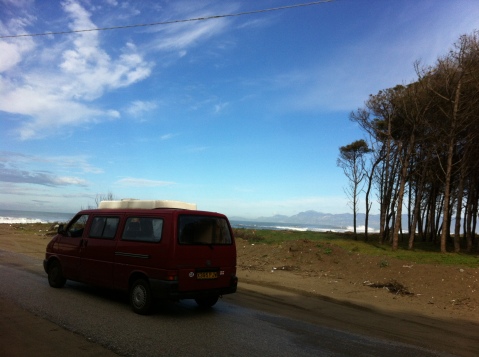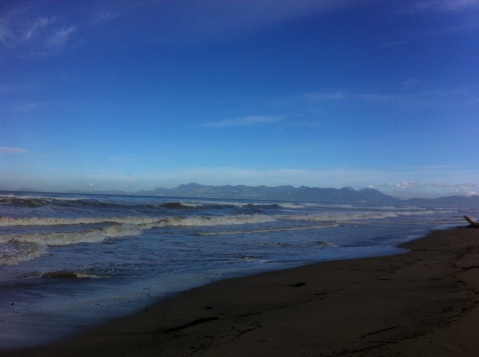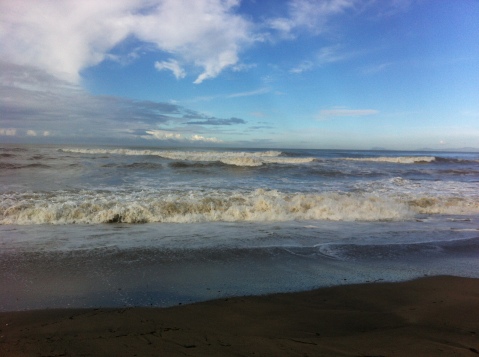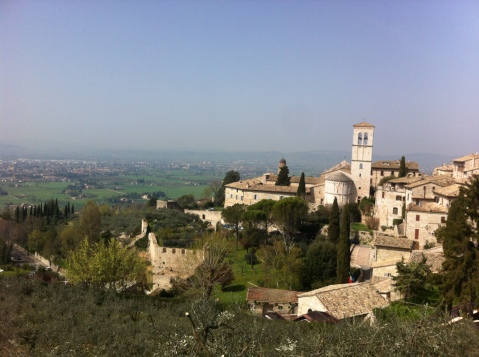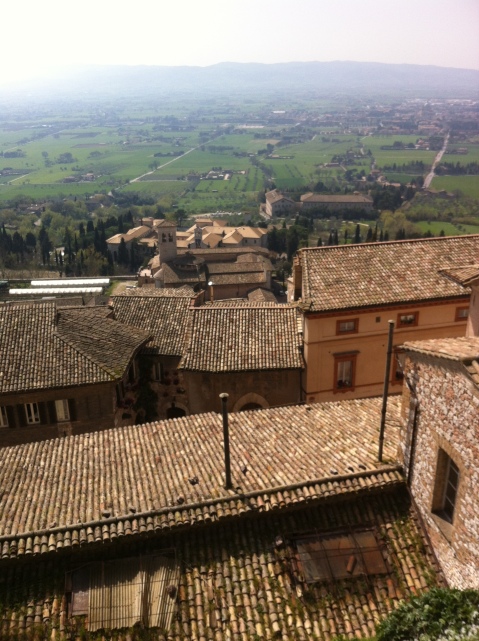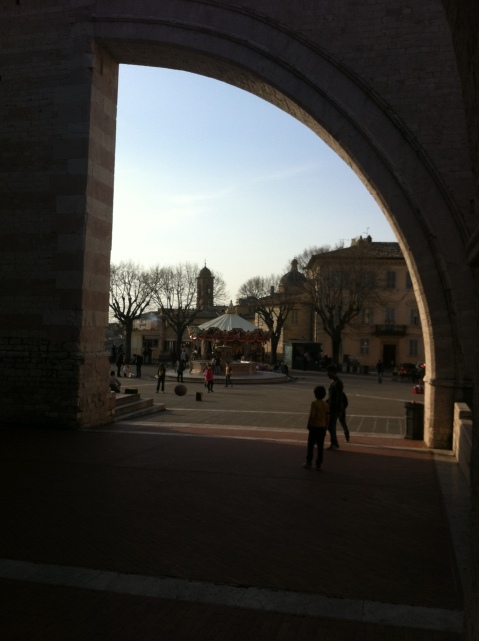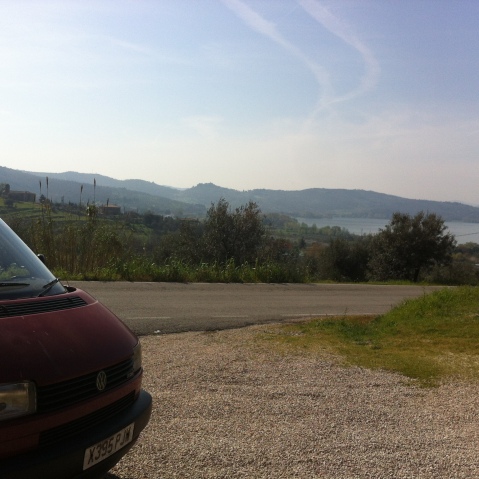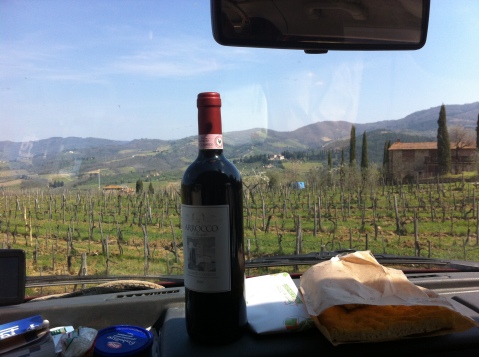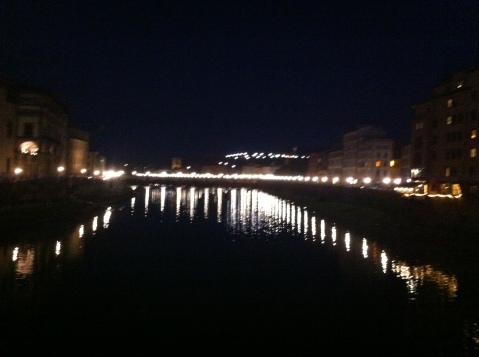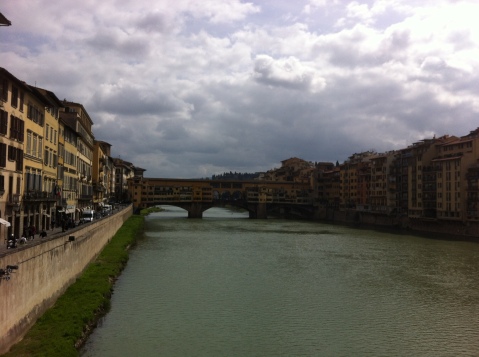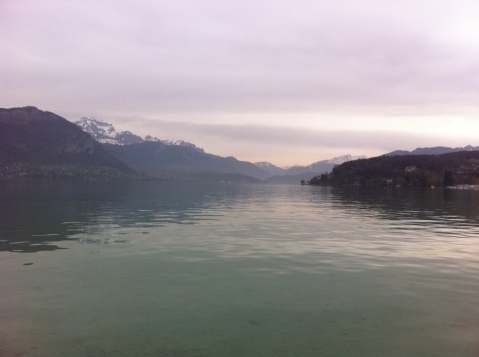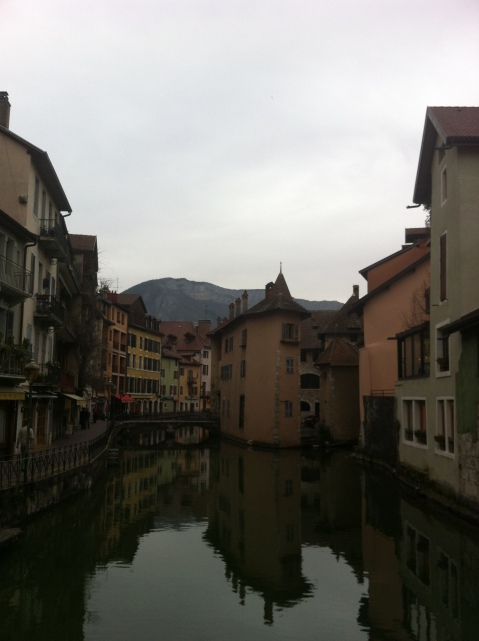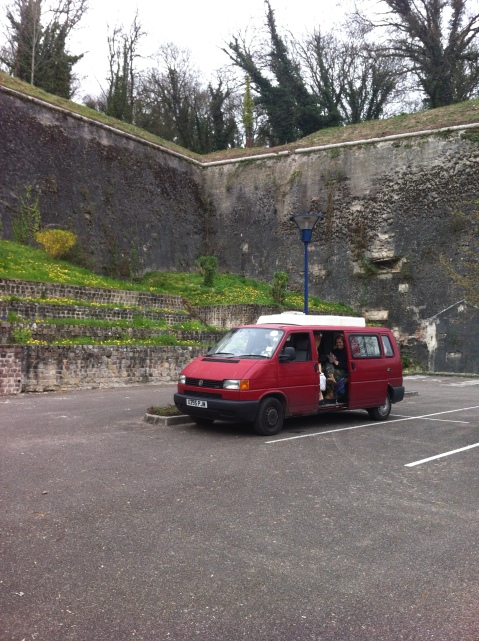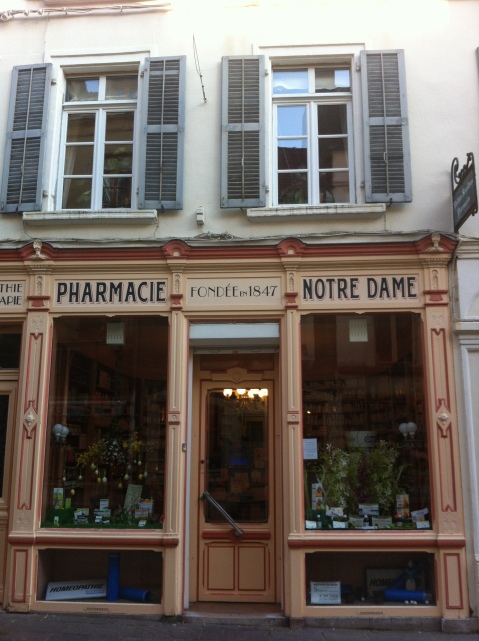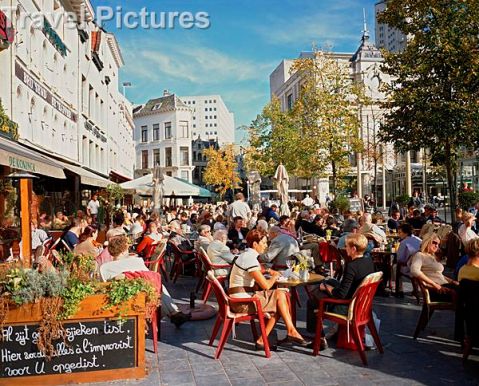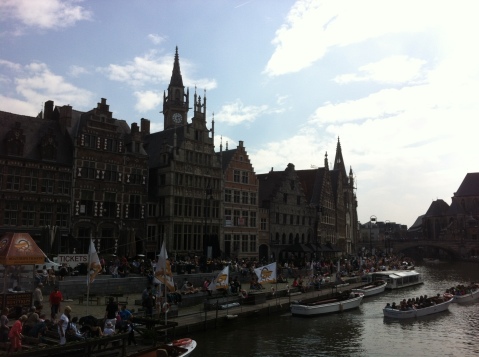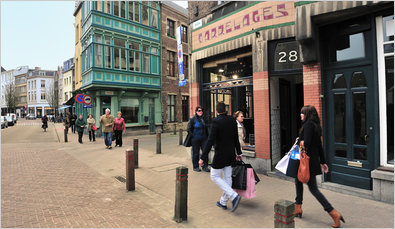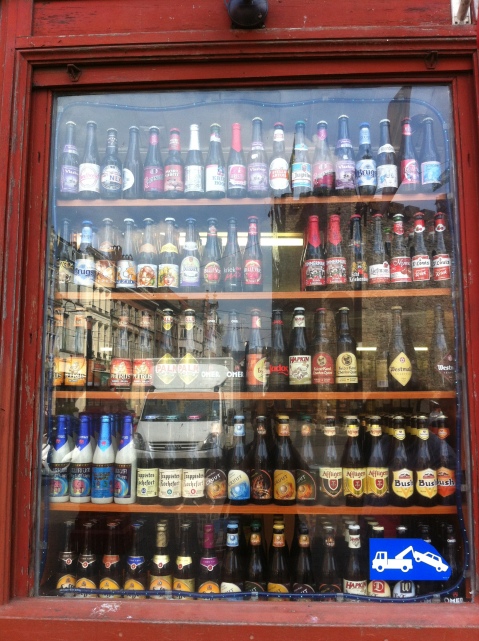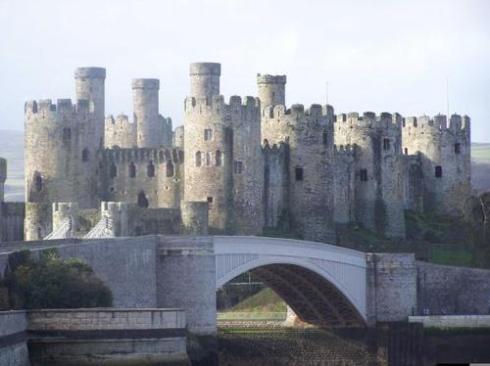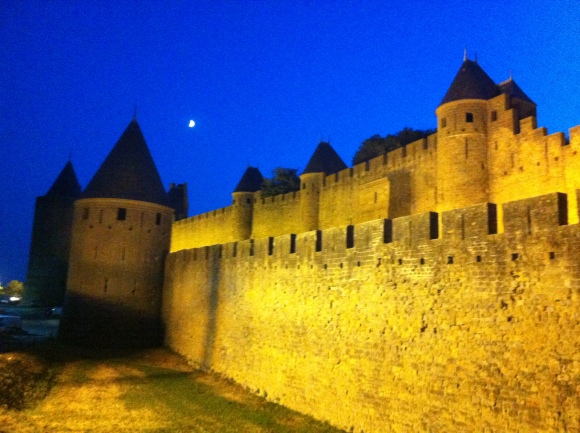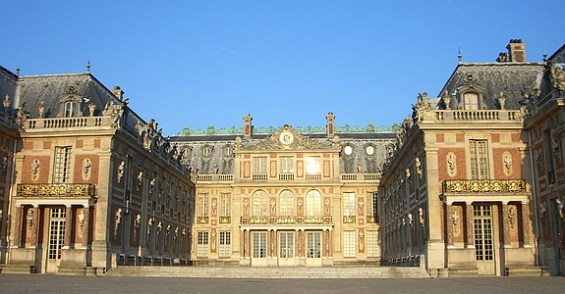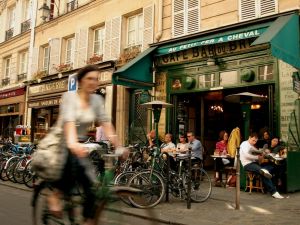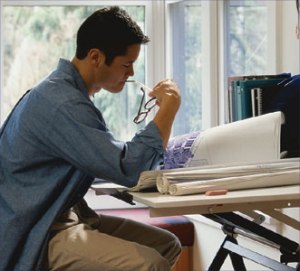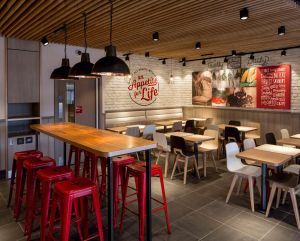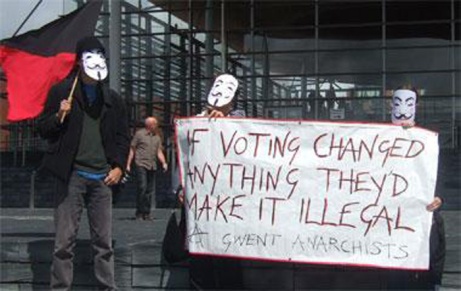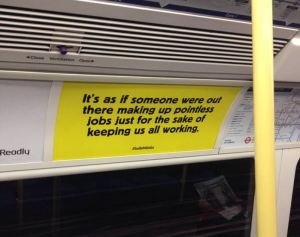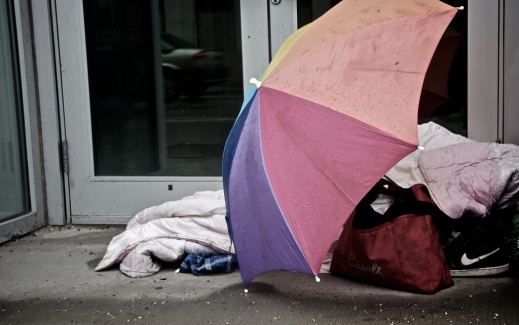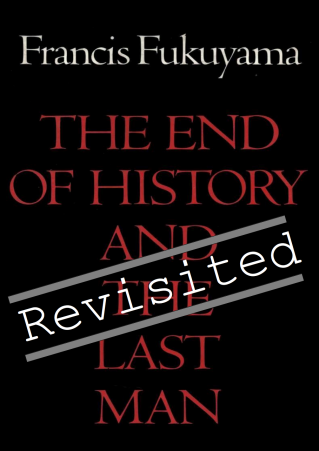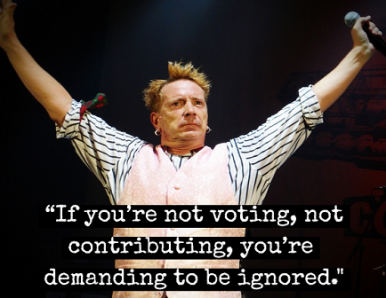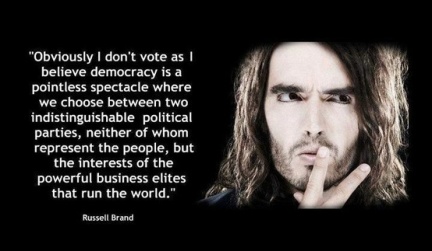Whatever Happened To The Leisure Society?
[EDIT: I’ve made this post sticky, as this topic is back in the news again! Mostly since Oxford university researchers announced that over 40% of jobs will be taken by robots soon . It’ll be interesting to see what really does happen, whether (as I suspect), people will just be kept busy doing ever more ludicrous tasks.]
In the early 70s, perhaps catalyzed by LSD or Marxism (or possibly both), academics in the humanities very briefly experienced a mini enlightenment. One of the most enlightening articles from this era, which I would recommend anyone read – if only the first couple of paragraphs – is Marshal Sahlin’s The Original Affluent Society.
In The Original Affluent Society, Sahlins explains that contemporary (ie-1966) hunter-gatherers like the Kalahari Bushmen or Inuits spend on average three hours a day working. Yet they live in some of the most inhospitable places on earth. Imagine how easy it must have been for stone-age hunter-gatherers living in temperate parts of Europe or America to survive. Their surroundings were so abundant they could procure everything completely for free from nature’s larder within minutes of their doorsteps – if they indeed had doors. They also had the knowledge to just go out and make anything they wanted – again completely free and gratis, using their extensive knowledge of the environment. This is why it’s a good idea to remain skeptical about the development agenda. If a person is “surviving on $1 a day in Africa”, it might actually mean they are actually rather well-off. Introducing waged labour and that economists’ pet obsession, property rights, to these communities turns them from being the most affluent people on earth into the poorest overnight. Way to go economists.
So, what does this have to do with us? Well, if you’re like me, you’ll have noticed: hold on a minute – three hours a day? In the arctic? WTF are we doing here in the West? We have the mechanisation of agriculture, digitisation of just about everything and roboticisation. Yet we humans are working more and more hours. We work 40 hours a week – probably around 4 times the amount of our paleolithic forebears. Something, somewhere has gone horribly wrong. We should be living in some kind of utopia where everybody is drinking drinks with umbrellas while robot slaves do our housework. What happened? Why do we live in such an inefficient society? Especially when capitalism claims to be so big on efficiency?
Unfortunately, the answer to this has been known for over ages. Herbert Marcuse predicted in 1956:
“the closer the real possibility of liberating the individual from the constraints once justified by scarcity and immaturity, the greater the need for maintaining and streamlining these constraints lest the established order of domination dissolve. Civilisation has to defend itself against the specter of a world which could be free. If society cannot use its growing productivity for reducing repression (because such usage would upset the hierarchy of the status quo), productivity must be turned against the individuals, it becomes itself an instrument of universal control.”
Marcuse, Eros and Civilization
Which, in a nutshell means: Capitalism wants to keep people busy. People must keep working to live and living to work, otherwise society will start – gulp – thinking for itself.
Those of you long enough in the tooth to remember the 70s might remember that Marcuse’s predictions about productivity had started to become a reality. Human labour capacity was outstripping demand and a “leisure society” was inevitable. There was talk of a three day working week and the question was posed: what are we going to do with all our free time? Freed from the shackles of employment, humanity would reach a new era of unprecedented creativity. People could live in tipis in Wales while robots and computers did all the human work. It was going to be like Woodstock every day. But with robots. Of course, all western governments realised this was terrible news for them. How can a Labour party survive with no workers? And how can right-wingers and Liberals survive with no consumers? Luckily for them, they had a solution: Bureaucracy.
Keep people busy at all costs. Introduce audits and targets and league tables and managers at all levels in the nationalised industries. Make them feel indispensable. Devise outreach schemes and health and safety drives and equal opportunity commissions; make sure that these new jobs are promoting equality and diversity, then any left-leaning person will be unable to question them. Make the public sector one huge, teetering bureaucracy where everybody feels they are helping society. Even though all society really needs is a few nurses, teachers and possibly policemen. If this bureaucracy idea is implemented, we can ensure that all people will be kept:
a. Too busy to change the status quo
b. Dependent on the state
Which is what happened. Ask any teacher, nurse, doctor, policeman, lecturer or social worker about their job and they will all, without exception, tell you that is blighted by inordinate amounts of pointless paperwork. The drop-out rate of new teachers is approaching 50%. A large proportion of them cite overwork as the cause. They are even talking of scrapping the long summer holidays, so it must be bad. Tenured university lecturers in the UK have to spend over half their working week on paperwork instead of doing new research or teaching students. Nurses and doctors spend as much time reporting on what they have just done as doing it.
The Protestant work ethic is so embedded in Anglo-American society that everyone from the unemployed demanding the “right to work” to the super-rich who do internships instead of just whatever the fuck they like all day are all in it together. The drudgery of wage slavery is the only way to feel fulfilled in our society. The long-term unemployed become suicidal. We are urged to detest those on Benefits Street because they are refusing to play along with the game.
The fact of the matter is that our society only really needs a two or three day working week. The other two and a half days create the surplus value which feeds capitalism by creating the consumer society. If people had those extra two and a half days, they might start their own businesses and compete with large scale capitalism by owning the means of production. ‘Owning the means of production’… of course, all this Marxist language sounds hideously old-fashioned to us now. It may be outdated, boring, passé, but let’s face it: It’s bang on the money, right?
Top Five Fairytale Destinations, Europe Style
Anyone who’s ever read a Terry Pratchett, JRR Tolkien, or JK Rowling (before she went all bleeding-heart-pinko and grown up on us) has fantasized about traipsing through misty snowcapped mountains and enchanted forests, encountering endearing local folk and mythical creatures and being held captive in imposing, multi-towered castles (or if it floats your boat – a boarding school).
The good news is, all this can be easily found in Europe if you know where to look (except for the mythical creatures). Here are my top 5 Fairytale destinations, Europe style…
5. Neuschwanstein Castle, Germany
Nestled in the Bavarian Alps and built by Mad King Ludwig, Neuschwannstein is the epitome of camp Fairytale kitsch. It was inspired by the castles of the Loire Valley and in turn became the inspiration for Disney’s ‘when you wish upon an star’ castle.
If you can stand the hoards of Japanese tourists and eye-watering parking fees, it makes a nice day trip from Munich. While you’re here, you can stop by at Hitler’s secret mountain lair at Berchtesgaden for a spot of ghoulish Boy’s Own-style sight-seeing.
The castle is currently undergoing renovation and its fairytale factor is therefore slightly diminished by it being entirely covered in scaffolding. Hence its position at number 5.
4. Bialowieza Forest, Poland/Belarus
Welcome to the dark heart of Eastern Europe. If those magical creatures were discovered to exist after all, it’d almost certainly be here. Bialowieza is the largest primeval forest in Europe and home to bison, bears and wolves. Travel advice: if you see a house made of gingerbread, probably best to avoid.
3. Giant’s Causeway, Northern Ireland
More like something out of Discworld than Northern Ireland, the Giant’s Causeway is a… erm… giant causeway in Northern Ireland. The crashing waves of the tempestuous Irish sea are vaguely reminiscent of the lighthouse scene in Harry Potter 1.
Likelihood of actually seeing a giant is slim, but after a few Jameson’s, who knows. If all the Caspar David Friedrich-esque Romanticism gets a bit much, for a light-hearted add-on, you can do the open top bus tour of the Falls and Shankill Roads in Belfast and wave at the chavs sitting outside Rangers and Celtic Supporters’ pubs.
2. Tintagel, Cornwall, England
Did King Arthur and Merlin and Gwynevere really live here? Is this where Arthur pulled the sword from the stone? Did he rule his Kingdom wisely with a proto-democratic round table on this rocky outcrop in Cornwall? Probably not, but it makes a nice excuse for the locals to open crystal shops and sell homeopathic remedies in ‘Merlin’s Tea Rooms’ and ‘King Arthur’s convenience store’, so who cares?
1. Cesky Krumlov, Czech Republic
Anyone who feels himself to be imbued with the Elfish gene… Anyone who ever applied to go on Knightmare… Anyone who has ever lost his girlfriend, job and flat due to their addiction to World of Warcraft (it happened to my friend’s brother)… Anyone who knows what The Gathering is… will like it here. And just about anyone else, to be honest. It’s a lovely little town in Southern Czech Republic that just screams “Hobbit!”. It’s great. Good beer, too.
A Road Trip From Heaven: Europe in 5 weeks
The route:
Bavaria – Austrian Lakes – Slovenian Alps – Ljubjana – Zagreb – Istrian Peninsular (Croatia) – Venice – Verona – French Alps – Aix En Provence – Avignon – Languedoc – Pyrenees – Bilbao – San Sebastian – Dordogne – Rhone Valley – Brittany – Normandy – UK.
Here are some of the best snaps I took en route with my phone.
The Konigsee, Bavarian Alps, Germany
Hitler’s mountain lair, the ‘Eagles Nest’ at Bertchesgaden, Germany
Kobarid, Slovenia
Dragon Bridge, Ljubjana, Slovenia
Gondola Drivers, Venice, Italy
The Cathedral Cloisters, Verona, Italy
Pope’s Castle at Avignon, France
Carcassonne, France by night
The Guggenheim Museum, Bilbao
The destroyed village of Oradour, France
Mont St Michel, Normandy, France
Here Be Hipsters: A Stroll Through Kreuzkölln, Berlin.
Getting Away From It All in Suffolk (Pictures)
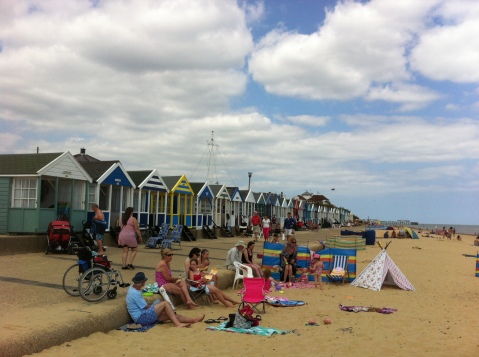
The beach huts at Southwold
If you’re looking for day trip ideas from London, the Suffolk coast provides a little bit of olde England, just an hour or so by car or train. The charming resorts of Southwold and Aldeburgh transport you back in time to bucket and spade holidays of the 1950s, with their easy-going atmosphere, locally-sourced food and superlative fish and chip cafes. The Suffolk coast makes an up-market and far more peaceful alternative to the likes of Brighton and allows you to really feel like you’ve got away from it all.
Here are some iphone snaps I took on a recent Redpig road trip. A long weekend was ample time to recharge the batteries, sample the local cuisine and seek out a few ‘secret’ beaches.
Photos From The Real Royston Vasey
On a recent trip to the Peak District, I stopped by Hadfield, the location for Royston Vasey in the TV series The League of Gentlemen. I didn’t see Tubbs and Edward, unfortunately, but I did see a Daily Mail branded newsagents wishing us Merry Christmas and a surprisingly sexy pie advert. Also good to know British Rail still run there, as I could have sworn it was privatised in 1993.
European Roadtrip #3: Travels in a Red Pig
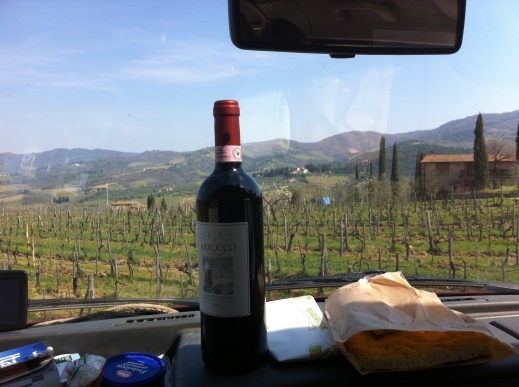
In March this year, my husband and I drove down to Italy in our camper van (the van is affectionately known as The Red Pig). We saw bits of France and Belgium on the way there and back. As you can see, the weather was pleasant most of the time, and lots of places were completely deserted.
Going out of season was great, as it cut out queues at nearly all the museums. It also allowed us to pull up and snooze in the van more or less wherever we liked. Below are some iPhone snaps I took en route.
The Best Time To Visit Europe
September and May have always been my favourite time to visit the Mediterranean, as scrambling over Roman ruins, drinking red wine, sunbathing – all the good stuff – are clearly best done without fear of heatstroke. It’s also well-known that August is the worst time to visit Europe, as many cities such as Paris and Madrid effectively close down. On top of that, you have the school summer holidays calendar which means just about everywhere with a patch of grass from St Petersburg to Dublin will be mobbed by screaming kids. Don’t even think about visiting an open-air swimming pool in late July.
Of course, the ski season lasts from mid-December to Late March, but the winter is otherwise a pretty miserable time to visit Europe, where winter means either -40 in the North or grey skies and inadequate central heating in the South.
I’ve just got back from an epic three-week trip down to southern Italy and back in the camper van and I have to say that mid-March is in some ways an ideal time to ‘do Europe’ if you are interested in culture rather than beaches. There were no queues for museums, no reservations necessary at restaurants, easy parking and sleeping wherever we liked in the van. The coast roads were traffic-free, which is also a huge bonus in places like the French Riviera and the Italy’s Amalfi coast, where there is enough local traffic to cause headaches at the best of times.
The weather was extremely varied, ranging from bright sunshine in Lyon to freezing hail in Naples, to snow in the Alps and April Showers in Belgium. It really felt like we got a unique insight into a side of Europe we hadn’t seen before.
Most importantly, of course, there were none of those insufferable other tourists ruining our tourism by doing touristy things and being all touristy. Which was great!
A Beginners’ Guide To… Belgium
It’s a truism that Belgium is the dullest country in the world. The weather would give the UK a run for its money; skies of the slate grey variety and endless drizzle compete for room with bracing wind and fog which comes in off the north sea much as in, say Glasgow or Morecombe.
The people, so we are led to believe, are a dull bunch of quasi-French bureaucrats who love nothing more than creating rules about the bendiness of bananas and tending to their ironically waxed moustaches.
Of course, there is a grain of truth in all these stereotypes, but if you are willing to go the extra mile – most notably away from the tourist traps of Brussels and Bruges – you will discover an open-minded and dare-I-say, hip country that warrants a week of anyone’s life. The fact that (just about) everyone speaks English and it’s only two hours from St Pancras also adds to the feeling that a trip to Belgium is a trip to ‘another Britain’, but a bit more continental.
Ever been to Amsterdam and thought, “well, this could be a nice place if it wasn’t for all the narcotourists and sex shops?”… Welcome to Ghent. Ghent manages to be both a picture-postcard medieval town with canals and cobbled streets and also a lively student city with a nightlife famous for its outrageous music scene (the infamous clubnight Breakcore Gives Me Wood was founded here) and its all-night pub crawl marathons.
Competing for the prize of ‘capital of Flanders’ is Antwerp, a slightly more modern, sophisticated city with some of the finest art nouveau architecture in the world and a pavement cafe and restaurant culture which is some of the finest in Europe. On top of this, Antwerp’s fashion scene is still very much at the cutting edge, with students travelling from places like Japan and New York to study with the greats of Belgian design.
Belgium’s history of weaving, architecture and art goes right back to medieval times, when the low countries were the richest seafaring nations in the world. The modern artists and fashion designers are continuing a legacy which stretches back from the bande dessinee of Tin Tin through to the Northern Renaissance and the guild houses of the high Middle Ages. Not only were Magritte, Rubens, Van Dyck and Bruegel all Belgian born, but the rich merchants of Antwerp and Bruges were also the main collectors of fine art from Holland, too. Some of the the innovations which Belgians contributed to fine art include the artist’s self portrait, the use of oil paint and even the idea of secular art itself.
No guide to Belgium is complete without the mention of the cuisine. While the seafood delicatessens of Antwerp and the haute cuisine restaurants of Brussels take some beating, I’m quite content with some (double fried) Belgian chips washed down with a strong (trappist) beer.
Just as the art, textiles and beer industries in Belgium have a long and illustrious history, so too, it turns out, does the European Union. Charlemagne was born in Liege in the 8th Century and went on to unite Europe as the leader of the Holy Roman Empire he created. The rest, as they say, is history.
Top 5 European Castles
What is it with Europeans and castles? Why did they have to build so many? Why are they so big? And why, as I once overheard an American tourist say in Edinburgh, did they have to ‘build them so goddam far from the train station?’
You build castles for lots of reasons, but mostly:
1. To show off, of course.
2. To protect your family from invaders intent on the whole rapin’ ‘n’ pillagin’ thing.
3. To Live out your powdered-wig-wearing-fantasy of being Louis XIV, even though it’s, like, 1895 and you’re German.
4. Because you’ve just decided ‘I am the REAL pope and that charlatan in the Vatican will have to come and get me if he wants to argue the toss’.
5. Because you’re mad (see 3. and 4.)
So, dear armchair traveller, here is a not very exhaustive and extremely biased (but awesome!) list of the best European castles.
5. Conwy, Wales
Welsh castles were mostly used as places to avoid the Welsh. Marauding hordes intent on pillaging your women and raping your livestock are best avoided, let’s face it.
4. Carcassonne, France
Even the throngs of shouty middle class Anglais on Range Rover powered booze-and-fromage-athon holidays cannot ruin this one. Strictly speaking, Carcassonne is a fortified town, but whatevs.
3. Versailles, France
Built by this mad guy who wore powdered wigs and thought he was Louis XIV or something… oh, hang on…
2. The Alhambra, Spain
In spite of being strict Muslims, they chose to name their castle after a pork product and a piece of underwear. Go figure.
1. Kalemegdan Fortress, Serbia
Anyone foolish enough to attempt to mess with the Serbs had better have a game plan for this bad boy. It’s been fought over by everyone from the Romans to the Nazis. They even have a US stealth fighter plane they shot down, in the castle museum. Rad!
Life Hacks: 3 Ways to Save Thousands of Pounds on University Fees
Here are three ways you can get a proper degree from a reputable university without burdening yourself with debt for the rest of your working life and without buying a fake degree certificate from a spam email company in China!
1. Outsource your degree: Go European
With British fees reaching an eye-watering £9,000, isn’t it time you looked elsewhere for a degree? Our neighbours in France and Germany pay as little as £300 a year for their fees and, as EU citizens, Brits are eligible for studying abroad for the same price. If you study on the continent, you could save yourself around £8,700 a year. Just think of the number of pints of watered-down beer and tickets to see second rate Indie bands you could buy with that!
If you’ve got an A-level in a certain country’s language, that’s more than adequate for acceptance to study in the country. WIN!
‘But I can’t speak a foreign language!’ I hear you cry. That’s OK – you don’t always have to! Many Nordic countries, plus Belgium, Holland and parts of Eastern Europe have large numbers of degrees where all tuition is in English. This is especially true of Business Studies, Science and IT-related courses.
Beer money saved: £26,100
Fun factor *****
Difficulty rating **
2. Distance Learning
Everybody knows that an Arts and Humanities subject is all about the reading and not about the lectures. Some Arts students will find themselves shelling out £9,000 a year for the privilege of having 6 one-hour lectures a week, plus a couple of 17-to-a-group tutorials with an inexperienced PhD student.
Just about every University out there offers a distance learning programme, where you walk away with a certificate from UCL, Durham, wherever, but for a mere snip of the price. If you really miss the personal contact, find someone locally to teach you one-to-one a couple of hours a week. Most Postgrads and even many professors will happily teach you privately for £30 an hour.
Beer money saved: £21,000
Fun factor **
Difficulty rating *
3. PhD by publication
Finally, we come to the PhD. That piece of paper which you sweat blood to write in order to call yourself a non-medical Doctor. If you’re serious about becoming an academic/getting tenure/getting paid to talk crap/pulling young hotties forever, you need to spend four years sweating blood over a PhD thesis, drinking coffee, trying to avoid daytime TV and sucking up to your supervisor, right?
Erm… No.
There is another way: PhD by publication. Write some academic articles, get them published, then submit a portfolio of published work to a PhD panel who award you with a PhD based on publications.
What we have here is basically a time-saving hack for anyone looking for a career in academia who is quite good already and doesn’t fancy paying £20,000+ for a piece of paper to tell people how good they already are.
Think of it this way: PHD + writing, say five articles will take approximately 7-8 years of your life. Writing five articles and turning them into a PhD will take approximately two years of your life. Also, while your contemporaries busy themselves writing an endless PhD thesis and watching the Jeremy Kyle Show, you have a PhD AND five publications under your belt. Who do you think will be the most employable?
What are the pitfalls?
You’ve got to be good. Very good. Good enough to have your articles accepted by reputable, peer reviewed journals. Not everyone can do this, but it’s not clear that sitting and writing a thesis for five years will make you any more capable of doing it afterwards, is it?
Beer money saved: £15,000
Fun factor ***
Difficulty Rating *****
Why I Stopped Blogging
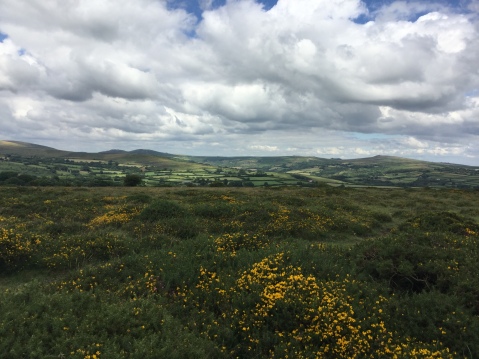
Hello everybody.
It’s been a while.
Two blog posts ago, and a lifetime ago, I moved to the country.
I said: “I used to write blogs about politics and cultural theory and digital society when I lived in the city. Now, I’m afraid this blog is going to turn into a combination of country lifestyle tips and folksy new age ramblings. Sorry about that.”
What I didn’t realise is that I would give up blogging altogether.
The truth is that moving to Dartmoor has had a profound effect on me. I had no idea this was going to happen, believe me.
But it has.
You see, the thing is: Journalism, or at least the semi-humourous blogging I (used to) do, requires a certain amount of… sarcasm, insightful put-downs, critical snarkiness and general negativity to make it work.
It also requires you to have your finger on the pulse, if only by reading Reddit or Facebook.
And I no longer have it in me.
I am too full of the joys of nature, too far-removed from everyday concerns. My husband and I have built our own little anarchist utopia and the only politics I’m interested in now is permaculture. Revolution disguised as gardening, maaaan.
There’s no point in me uploading lifestyle or gardening tips, as I’m a complete novice myself. So, really, that’s it. As for those New Age ramblings, I now work for Blinkist, a German startup that specialises in summarising self-help books, so writing about self-helpy stuff in my spare time sounds too much like work.
In an odd turn of events, though…
I have started writing psychedelic magical realist poems on romantic themes like death, paganism and nature. They go down well at the local poetry night. I even got invited to read some at a local festival.
Publishing poetry online is a bit of a mine-field. So, if you are interested in seeing any of it, send us a mail at kerrysmallman at hotmail dot com for the time-being.
In the interests of keeping the blog alive, I’ll post photos from time to time of my travels in Devon and Cornwall.
Thanks for reading,
K x
So… I Moved To The Countryside
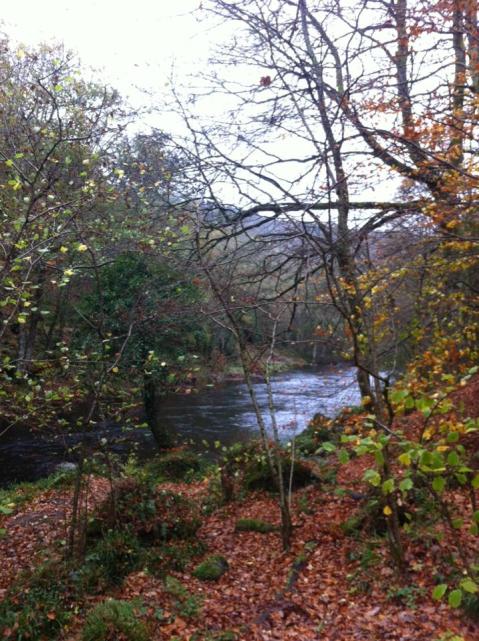
Although a small town in terms of population, and renowned for its pretty colleges, Oxford is a surprisingly gritty, urban town once you get under its skin. We were living right on the Cowley Road, with its kebab houses, music venues, sex shops and student pub crawls, so it felt pretty much identical to, say Ladbroke Grove or Brick Lane at street level.
I loved the cosmopolitain edginess of East Oxford and am sorry to say I even liked it when it went all hipster and gentrified. I was, after all, a city girl. Cities were fundamentally places where people could be themselves. They were exciting, vibrant and culturally rich spaces where people from all around the world could come together and enjoy the pure excitement of living.
Having grown up in a rural environment and indeed having fled this said environment aged 18, I never thought I’d return to the countryside. I remember as a teenager longing for escape from small towns and small town people with their tiny horizons and inconsequential lives. My urban travels included living and working in Edinburgh, London, Calais, Berlin and Oxford.
But then, on a whim, my husband and I decided to move to the countryside. There was not really any grand plan. At all. We just kind of got bored of the Cowley Road and wanted to maybe get a bigger house and maybe have kids someday and maybe Bristol was cooler than London these days, anyway, so why not look at Somerset?
Six months later and here we are: Deepest Mid Devon. In a beautiful old house with an enormous garden. We’re on the edge of a little village with one shop, one pub and two buses a day to Exeter. But I can’t say we have regretted it for one second.
It’s like a weird mental cleansing to be here. Literally everything and everyone I care(d) about is gone. It’s like a dream, but in reverse. It’s like waking up and seeing reality as it for the first time. Being here has peeled away the layers of mental sediment which have accrued over time. Old cultures, beliefs, education, habits, prejudices, expectations, hopes, fears, certainties, familiarities and routines are gone. There is only the vast, untamed wilderness of Dartmoor, the activities of foxes, squirrels, herons and pheasants (all passing through my back garden) and the everyday, basic needs of keeping warm and gathering food.
I watched a film about Permaculture the other day. In it, a man said that you can never feel depressed in nature. Nature is eternally optimistic. Mushrooms send out billions of spores, flowers and trees pollinate, creepers creep, trees stretch and salmon leap. They have limitless hope.
He said that you can never feel depressed in nature because you have reached rock bottom. The earth – mother nature – is the ground, the solid foundation, there can be no let downs or disappointments here. The only way is up. And the only way to live is to simply be.
I used to write blogs about politics and cultural theory and digital society when I lived in the city. Now, I’m afraid this blog is going to turn into a combination of country lifestyle tips and folksy new age ramblings. Sorry about that.
Further Thoughts On Jeremy Corbyn
It’s a sad indication of the lack of political imagination endemic in the West that the best that today’s Socialists – from Alex Tsipras to Jeremy Corbyn – can come up with is to borrow yet more money from global finance and try and expand the economy. And then this is painted as a ‘radical’ alternative! Growth economics and indebtedness are the fundamental basis of capitalism, so Corbyn is Thatcher’s bitch just as much as Blair was.
Fascism (and Ice-cream)
A new ice-cream parlour has opened opposite my house and it’s a bit grim. It’s a chain, apparently: Basingstoke, Plymouth, Oxford… There’s nothing wrong with the place, really. It’s just the branding: The name, the signage, the pink and black and red and white interior.
The owners are clearly ignorant of the rules of the game. The rules are: A bit hipster, Scandinavia-meets-Pacific-North-West, wooden tables, exposed brick, white tiles, beards, tattoos… It’s not that difficult. Even fucking KFC has started doing it now. It’s in the marquee in British Bake Off, for fuck’s sake.
Now I’m all for originality and I have as big an aversion to that nebulous group we call hipsters as anyone, but let’s be realistic. We are living in an age with a new, weird kind of fascism: The homogeneity of global, urban consumer taste is all-pervading and to open a shop with a pink and black interior is to advertise your “otherness”, or at least your cluelessness, to the urban customers you wish to entice.
I’m not sure exactly when it set in, but somewhere in this millennium, everybody started thinking alike. The subcultures which had previously defined young people and kept them apart from their elders subsided. Vintage clothing further blurred the generational gaps. Here’s a disturbing fact: A 16-year-old’s record collection now contains 40% of the same tracks as a 60-year-old’s.
Meanwhile, at the other end of the scale, the last of the proper grannies died: Those ladies who wore nylon dresses, ate salad cream and disapproved of ‘living in sin’ and ‘the gays’ were no more. In a recent EU survey, 99% of Britons said they wouldn’t mind if a gay couple moved in next door. Europe-wide, this figure is well over 90%.
In urban areas in the Global South, western liberal values like gay rights, marriage for love and women’s rights are in the ascendency, thus breaking down the cultural peculiarities which made the world a much more diverse place twenty or even ten years ago. Meanwhile, global super-brands from Apple to Beyonce stalk the earth for new markets, sucking more and more consumers inexorably into their crowd-pleasing thrall.
In the age of big data, governments and corporations are increasingly able to design according to the wishes or predispositions of the crowd. “Crowdshaping” involves using personal data drawn from the people inside a defined physical area to shape and reshape their experience. For example, town planners make traffic lights which change according to real time traffic data, or DJs play songs taken from the audience’s home computer playlists.
Which is to say that the present and future of our society is a tyranny of the majority. It is a society where we are closely monitored, and everybody thinks and acts alike. Meanwhile, Germany dominates Europe economically and Scandinavian aesthetics rules culturally. Sounds rather like the Third Reich. But with hipsters.
Which kind of makes me want to hang out in the ice-cream shop just on principle. But I bet they don’t even have fucking WIFI.
Why Do I Hate The Tetley Tea Folks?

Tetley Tea Folks. That’s right. The Tetley faux-Northern, fucking uncute Tea Folks with their flat caps and their mediocre beverage made from tea factory floor-sweepings.
I have no idea what went on in the minds of the advertising creatives who, in 1973, decided that the best way to market tea was to invent a group of quasi-gnomes from Keithley. And why have Tetley kept doggedly re-booting these whippet-bothering bores over a forty year timespan? “The Tetley Tea Folks are back”… “Collect all seven tea folks” … “That’s better, that’s Tetley” … Superhero Teafolks … Medieval Teafolks …
Let’s compare the competitors:
The PG Tips monkey is awesome.
The Churchill dog is funny and reminiscent of a popular historical figure who won a war.
That Russian meerkat is cute and has an even cuter baby meerkat. Nailed it.
As for the sexy Cadbury’s Caramel bunny…
So, now the tea folk are back (again) with a completely superfluous superhero rebooting:
What with tea being one of the biggest growth areas in the food and drink industry at the moment, Tetley are keen to cash in. But the growth in tea is all about diversification and choice. Which might be what is so jarring about the Tea Folk.
The food and beverage industry encourages us to decide between decaf monkey-picked single-plantation white tea and detoxing vanilla-scented chai, while the Tetley Tea Folk come from a world where the only choice is “mug or cup, love?”.
Is it because I am so bourgeoise that I cannot abide the Tea Folk? Perhaps their real-ness and Northern-ness throws my own inauthenticity into relief. Do I subconsciously long for the girl I used to be: Northern, authentic, working class?
Do these dwarf-like harbingers of sentimentality remind me that I have betrayed my Yorkshire roots for the glamour of the cosmopolitain elite?
Facebook’s Election Reaction
I never delete people on Facebook for holding opinions that are different from mine. As an advocate of free speech, I welcome comments from lunatics, ‘KIPpers and even Tories (Of course, the first two are far from mutually exclusive).
In spite of all that, my Facebook feed around election time reminds me how much I have surrounded myself with woolly, liberal do-gooding pinko space cadets like myself.
To take an arbitrary example, no fewer than 33 of my FB friends “like” the Green Party. Conversely, not a single one of my friends “likes” the Conservative Party.
So, it should have come as no surprise today that my Facebook news feed reads like a Euripidean tragedy. Between gnashing of teeth, pulling of hair and crying into gluten-free yofu muesli, we had:
“I’m so, so sad”
“FUCK YOU ENGLAND”
“I can’t believe it. Devastated.”
Then I realised: We need to stop being unhappy. In every country of the world, including even formerly socialist places like Sweden, corporate control has made politics redundant. What you do or don’t do at the ballot box pales into insignificance compared with what you buy, where you bank and how you spend your time. We still have the power as consumers and (non-)workers to change the world should we wish to.
I voted Green and then went to Tescos on the way home and bought bacon and used their free plastic bags. That makes me as deluded and confused as the working class people who vote for ultra-capitalist UKIP.
Similarly, those people who are moaning about the election results, yet continuing to work for global companies whilst taking out credit cards and loans to buy shit they don’t need that’s been made in sweatshops from conflict minerals by third world slaves are just as hypocritical as me.
On a global scale, we are the 1%. We blame the Tories, but don’t realise that it is us, yes you and me who are the enemy….
The reason “they” have it all is that we all want what they have. It’s called false consciousness. The only way out of this mess is to create a system with values other than “their” values.
Those who are too chicken shit to consider a sustainable, anti-growth economic model may as well just quit moaning and get out there and make some money.
Liked this? Now read: Whatever happened to the leisure society?
We Did The 90s All Wrong!
For the last few years, I’ve kind of enjoyed watching with bemusement as the kids of today re-live the 90s. It’s sort of like being in a fairground hall of mirrors, where you can recognise the original image, but it’s been hideously deformed. All the while, Corona’s “Rhythm of The Night” plays in the background.
So far as I can tell, there are three main looks in the 90s revival.
1. The first is the one I call: ‘Oh My Eyes’

I honestly don’t know if it’s meant to be ironic or not. It’s stuff like salmon pink shiny shirts with african patterns, pastel shellsuits or anything that would have been described as “Jazzy” by your parents.
 When they bought it you as a Christmas present. Which was then hidden down the back of your wardrobe and never worn in public. Until 2011, when it ended up in a vintage shop and on sale for £75.
When they bought it you as a Christmas present. Which was then hidden down the back of your wardrobe and never worn in public. Until 2011, when it ended up in a vintage shop and on sale for £75.
2. The second is what they’re calling ‘Grunge’. But is really like Blossom. If Blossom was a slutty Goth.

3. …and finally, is the look I’m going to call ‘Crystal Peaks’.

Crystal Peaks was a shopping mall built near my house whose sole purpose was to introduce consumer debt into the former coalfields of South Yorkshire. The people who shopped there looked like this. They also wore Kappa trackie bottoms with press studs. And Naff Co 54 jackets from the market. Which are now 20 quid on Ebay. I shit you not.
So, that’s it, guys.
We were totally wrong about the 90s. We thought Barbie Girl and Mr Vain were shit, but it turns out they were great. Tricky, Jeff Mills, The Pixies and Radiohead simply will not stand the test of time compared to the likes of Dr Alban and Apache Indian.
While we wistfully imagined ourselves singing timeless classics like Wonderwall or End of a Century in 20 years’ time, we had no idea that singing Here Comes The Hotstepper whilst wearing Kappa was where it would be at.
How foolish we were to watch Twin Peaks, when the true pinnacle of popular culture was in fact Saved By The Bell.
Luckily, it’s not too late for us to do the 90s the right way: The way we should have done it. Just need to head down the vintage store for a velvet dress, crop top and choker combo. And a Sabrina The Teenage Witch box set from HMV.
There is barely any photographic evidence of the 90s the first time round, anyway, so the 90s version 2.0 is going to be the one we remember, let’s face it.
Pulp: Life, Death, Supermarkets and Cultural Appropriation
The view of Sheffield presented in the documentary film Pulp: Life, Death and Supermarkets is hopelessly out of date and serves as a reminder that maybe Jarvis and co. were always guilty of cultural appropriation.
The man with no teeth who sits in the newspaper kiosk is a Pulp fan, apparently. I’m sure he likes nothing nothing better than to go home after a hard day’s shouting “uuuueeeehwooom” (meaning ‘late Star’) and stick on Bar Italia before settling down to a double Corrie omnibus. The two old ladies who drag their shopping trollies around Castle Market are also Jarvis fans, we are told. Do they file their Pulp CDs next to Cabaret Voltaire or Scott Walker, I wonder? Is it Pulp’s pithy social commentary and wry witticisms they like, or is it their masterly portrayal of suburban ennui through references to the detritus of 70s modernity? Or is it because the band are famous and from Sheffield and sound a bit like Bryan Ferry?
Either way, I’m pretty sure Jarvis had a small sex wee when he discovered that Mavis was a fan. Because, although Pulp like to revel in faux-working class nostalgia, they are not a working class band, either in terms of fan-base or band members’ cultural heritage. So finding out that real Sheffielders like them must have been a dream come true.
Jarvis and his sister Saskia, yes – Saskia, grew up in the biggest house in Intake. It had a walled garden and an annex. In fact, their family owned most of the row of shops at Intake. Jarvis’ Mum was – and may still be, for all I know – a Tory councillor. Jarvis went to Central St Martins Art school. He now lives in Paris. Choosing to become an expat in France rather than Spain should have rung an alarm bell for anyone who was labouring under the gross misapprehension that proper Sheff lads go on to form Art-Pop-Electronic bands.
Of course, it was the northern accent that did it. As soon as someone speaks with anything other than RP, they are immediately able to carve out a career as denizens of working class culture, defenders of the Common People. The music press – especially in the 90s – were falling over themselves to lionize anyone who had ever had a Saturday job in a supermarket or drunk a pint of mild. Claiming to have holidayed in Butlins as a child was more or less a guaranteed Number 1 single. Blur pretended to like football and dog racing for a while, but were pretty quickly outed as mockneys and decided to open cheese shops in Glocestershire. Pulp were similarly pseudo, more northern manqué than northern monkey.
Even though prior to Common People, Jarvis had made a career out of lampooning and parodying the social mores of the working classes, nobody ever questioned his sincerity. Think of Joyriders: “we’re so thick we can’t think/can’t think of anything but shit, sleep and drink”, Mishapes: “What’s the point of being rich if you can’t think what to do with it? ‘Cause you’re so bleedin’ thick…” and I Spy “My favourite park’s a car park, grass is something you smoke, birds is something you shag / Take your year in Provence and shove it up your arse”. The lyrics of these songs are a confrontational assault on Chav mentality, or on “Townies”, as we used to scornfully call them in Sheffield in those days.
In Pulp: Life Death and Supermarkets, Sheffield is portrayed as if it is still 1984. As if the miners are still on strike and Castle Market is still the place for knicker elastic. As if the overpowering smell of salt, vinegar, diesel and urine still lingers in the air on Pond St. As if the Forum and Meadowhall have never been built. As if a gallon of Magnet and a packet of Woodbines are all we need to take away the pain of our meaningless lives of unending drudgery, rainy saturdays and dripping sandwiches.
Life, Death and Supermarkets is nostalgia for a world where Tony Blair hasn’t schmoozed with Oasis whilst systematically dismantling Socialism. Where football hasn’t become the preserve of Arab billionaires and £40 ticket holders. Where Sheffield doesn’t have pulled pork, flat whites and an Apple store just like everywhere else.
Life, Death and Supermarkets is a lie within a lie. It is recuperation, cultural appropriation. It is class pornography. It is Benefits Street. It is the fetishisation and theft of authentic working class identity. The viewers’ gaze, our gaze, feasts on a northern fantasy. A fantasy where poor people are able to escape shitty towns by writing songs about supermarkets. A world where working class people even like Indie music.
Oh, Look! Anarchists Have Vandalised The Tube
It appears that London’s commuters have been attacked by anarchists telling them they need to stop working.
For those struggling to live and pay rent in the world’s most expensive city, those posters probably won’t cut much mustard.
However, the posters are indeed correct.
Revolution will only happen the day the working class realize they don’t have to work. It is only work which makes someone working class.
Socialists (as opposed to anarchists) on the other hand, are convinced that jobs are a great thing. They hold miners’ strikes and march for the ‘right to work’. Which means that Marxism might not be the best hope for the poor after all.
I wrote a blog about this a while ago, which explains all this. It’s here, if you haven’t already read it.
Town, Gown and Down and Out: No Easy Answers To Oxford’s Housing Crisis
As well as the breath-taking honey-coloured stone, the famous dreaming spires and the tweed-clad Dons, the one thing that many visitors first notice is the number of homeless people on Oxford’s streets. Indeed, the homeless in Oxford are as numerous as they are visible. On any one night in Oxford, there are dozens of rough sleepers, hundreds more in hostels and thousands more ‘sofa surfing’ or sharing three or more to a room (making Oxford the UK’s 4th biggest ‘homelessness hotspot’). Some two miles away on the outskirts of town, the Oxford ring road is choked with stationary traffic at rush hour. Commuting to Abingdon or Whitney is the stuff of misery for a huge proportion of those who work in the city. These two seemingly disparate facts (homelessness and traffic) are, of course, intimately connected: Oxford is in the midst of a housing crisis. And the trouble is, there are no easy solutions. In spite of what commentators on the left and the right might have us believe.
The lack of housing cuts through all sections of society and is not reserved for some imagined underclass. Wages and job security in publishing and academia are enjoying a race to the bottom while property prices are continuing to out-perform the rest of the UK. The average property price is an eye-watering £380,000, while wages hover at around 1/12th of this figure. Simply put, Oxford is the country’s most expensive place to live, in proportion to wages.
The situation for Oxford’s less-well-off is, of course, even worse. The maximum housing benefit is £800 a month for a parent and child. A quick look at Rightmove reveals that the cheapest 2-bed property in town costs £865. You can, as they say, do the math. The Government’s so-called bedroom tax does not get a look-in here.
As we move further down the social scale, beyond town and gown towards down-and-out, the picture is even gloomier. The number of new arrivals at homeless shelters is growing by the day, yet the council has cut the hostel budget by 1/3rd. Many of what me might glibly call ‘normal’ people are now destitute, due to something as simple as falling out with a partner or losing their job. Most of the new arrivals were not into drugs or drink – until they slept rough for a couple of nights, that is.
Housing crisis affects all walks of society: The homeless panhandler, the debt-laden student, the impecunious young professional, the struggling single mum, the miserable commuter. But how can we really, honestly, help them? How about we think about supply and demand? Or, as Oxford Labour party say, let’s build more houses. If you look at a map, much of Oxford’s geographical centre is green. The colleges own plenty of marsh land, pastures and playing fields which could be used to house Oxford’s poor, or so the narrative goes. The City Council has outlined the development (NIMBYS-notwithstanding) of around 10,000 homes in the next fifteen years, including a new garden city at Bicester. Unfortunately, this still leaves a shortfall of 20,000 when compared to its own estimates of population growth.
The council is in constant wranglings with itself over various building projects. It recently tried to build housing association homes for over 3,000 people in a new complex near the Kassam stadium, but it was wisely blocked by the Green party. I say wisely, not because I especially care about the no doubt very beautiful sparrows, earwigs and dormice in the proposed location, but because – I’m sorry to say – it is a fallacy that building houses reduces housing demand. Just as building motorways increases traffic, building more housing attracts more people.
Expanding a city attracts more people. There are already twenty thousand or so miserable commuters who’d love to move back to the city, let alone all the service industry staff – by which, of course, I mean immigrants – who would flock to a growing Oxford if it were to expand. Oxford’s reputation as a city of scientific research and a publishing mecca outwith the academy mean it will always have top people setting up great start-ups. The Universities themselves are, of course, growing exponentially, stuffing in more international students, as well as the home grown elite who are willing to shell out the fees for the word “Oxford” on their degree. Building new developments would merely serve to line the pockets of construction companies and landlords, which I can’t help but think is the real motivation behind the purported ‘public good’ of building more homes.
As is so often the case with macroscopic, top-down thinking, seemingly attractive technological solutions ultimately mask a deeper structural problem. Houses have become properties – commodities to be bought and sold. Student towns, pretty towns and towns near London are even more susceptible to house price inflation than most. Oxford is all three of these. The likelihood of Oxford University’s reputation waning any time soon is pretty slim. It made it through the last 1,000 years in good shape. As long as The West remains the ideological gatekeeper of knowledge, an investment in Oxford property looks like a no-brainer.
In saner countries than Britain, these problems have been solved by introducing rent caps or clamping down on buy-to-let. But there are no guarantees. Rent caps in Berlin held back astronomical rent rises, but the city is becoming less affordable to locals by the day. There really are no simple solutions to Oxford’s housing crisis, but that doesn’t mean we shouldn’t do what we can. We may not be able to make the Government put the needs of its citizens before that of the banks, but each of us can be conscious of the housing needs of those around us and ensure that we act with compassion towards the homeless this Christmas.
The End Of History Revisited
2014 marked the 25th anniversary of the fall of the Berlin wall, an event I remember watching with both excitement and confusion at the time. Being only nine years old, I’d never actually heard of the Berlin wall before, but it looked like something very important was happening. Unbeknown to me, something very important was happening. I was witnessing the triumph of freedom and democracy over communism. Or at least the bankrupting of the Soviet Union and its replacement with capitalist hegemony.
In the spring of that year, Francis Fukuyama’s little-read piece in National Interest had predicted that free market capitalism was the only way forward and that communism was inevitably fizzling out. Pretty soon, he said, history would end, leaving humanity in a permanent state of liberal democratic bliss. It was only a matter of months before Fukuyama’s predictions appeared to be coming true: Solidarity won in Poland, GDR Refugees flowed through Hungary, the wall came down in Berlin, and – most surprisingly of all – David Hasselhoff sang atop the Brandenburg Gate. Ceausescu, Gorby et al were consigned to the scrap heap of history, like carbon paper, the ridings of Yorkshire and white dog poo.
A stroll through Berlin today might indeed reinforce the idea that the end of history is here. If ever there was a figurehead for the end of history, it’s the 21st Century cosmopolitain city-dweller. For the sake of argument, let’s call them a Hipster. Equally at home in Williamsburg and Kreuzberg, the 21st Century Hipster knows no international borders, loves all the latest technology and reinforces unequal economic structures in whichever hotspot it calls home. Hipsters are never racist or homophobic and really don’t see much point in governments or international borders. They value diversity and individualism above all else. Capitalism personified.
Of course, the Hipster aesthetic is no longer the preserve of the international backpack/jetset. Hipster went viral. Suddenly every high street in the Northern hemisphere has craft beer, pulled pork and bearded men with tattoos. The Hipster aesthetic is really now nothing more than the mainstream of youth culture: Be nice to gay people, have a cool phone, eat home-made stuff, make stuff and do something interesting with your life.
In spite of all this, if someone were to ask the question “Does it feel that, in 2014, we have reached the end of history? Do you feel like everything will more or less stay the same from now on?” The answer most of us would give is a resounding “no”. Not only are we becoming increasingly aware of a multi-pole world emerging where America, China, India, Brazil, Europe and Russia vie for economic and ideological hegemony, we are also witnessing a challenge to the liberal democratic dream in the west by so-called popularism. Figures as comically disparate as Nigel Farage, Vladimir Putin, Osama Bin Laden and Hugo Chavez remind us that history is far from over and that either the barbarians are at the gates of Rome, or that Rome needs to realize that Shanghai, Mumbai and Sao Paulo exist too.
A list of the top ten world population growth hotspots reads like a compendium of despots, beheadings, child soldiers, modern-day slavery and rule by military coup. I would wager that transexual rights are pretty far off the agenda in Liberia, Afghanistan, the Sudan, Sierra Leone and Oman. Even Russia and China may never be as zealously enthusiastic about minority rights as the west. (As Hitler showed, it is possible to have a capitalist system which supports majority rights at the expense of minorities.)
Fukuyama and others imagine that, given time, the international markets will correct the whims of national politicians and that capitalism – albeit in a Chinese or Indian flavoured model – will prevail. So far, it appears that once people reach a certain level of material wealth, they have the time and energy to question authority and to push for democracy. As Fukuyama said in a recent article in the Wall St Journal, “Even as we raise questions about how soon everyone will get there, we should have no doubt as to what kind of society lies at the end of History.”
Fukuyama would point out that the market, by its very nature, cuts down national boundaries and that, through the internet, infrastructure and immigration, humanity will be forced to be liberal, like it or not. His entire prediction, then, is based on a single idea: Capitalism will prevail. If we are to predict whether his predictions are correct, we need to decide whether Capitalism has a future.
The fundamental basis of our economic system is the idea of growth. Without growth, there can be no stock market, no investments, no loans, no banks. There are three ways to get growth: Exploiting nature (eg – by manufacturing goods or by burning fuels), exploiting human capital (eg – by making working weeks longer, or introducing zero hour contracts), and exploiting money (eg – by insuring money or betting on futures). That’s it.
Aside from the cheery realisation that our entire economic system is based on environmental destruction and human misery, the other thing these facts should tell us is that growth capitalism doesn’t have long left to run. The UN says with 80% certainty that what I’m going to call ‘peak humans’ will occur before 2100. The earth cannot support more than 12 Billion people, whether they eat GMOs or not. Similarly, the oil, gas and mineral deposits of the planet are finite. Fracking and shale gas have delayed the inevitable, but I don’t think that even the most gung ho of petrol heads expects to be running on gas come 2080.
Two of our three pillars of economic growth (ie – the exploitation of human and natural resources) look pretty unlikely to survive the century. This means that capitalism is going to have to change drastically if it is to survive. The question of whether you can make money out of money without human and environmental resources like manufacturing, immigration, air travel and wage competition is oddly both pie in the sky and a pressing concern. My intuition is that somewhere along the line, debts need a human being doing a crappy job so they can buy crappy things. I’m no economist, but I can’t help but think that over-dependence on ephemeral assets is the stuff of crashes, bubbles, bank runs, dust bowls and wheelbarrows of banknotes.
The next couple of years will be a vital turning point in deciding whether the world will switch towards a more sustainable economy. The economic recession has forced many people into creating their own sustainable businesses, far from the clutches of the stock markets. In fact, the amount of money made by profit-sharing cooperatives outstripped that of smartphones by a significant margin in 2012 (in spite of what the mainstream media failed to mention).
Young Western people are into things like knitting, baking, sewing, buying vintage clothes, collecting old things, growing stuff on their rooftops, riding bikes, eating less meat – all hallmarks of a post-Capitalist, sustainable economy. The big question might be whether or not the young people in China and India catch the same bug.
In the years since the fall of the wall, we have seen a homogenisation of cultures, where the global rich’s youth are a tolerant, democratically inclined, liberal-minded elite which grows by the thousands in number every day. We could be forgiven for mistaking this for the end of history. But counter to this, the years since 1989 have seen the rise of fundamentalist Islam, the rise of Popular parties, and a population spurt in some of the world’s least liberal countries. We know that something is going to happen with global warming: It might mean catastrophic destruction of major cities or perhaps a move to sustainable local energy cooperatives. In technology, we are going to see artificial intelligences overtake humans and the reflexive phase of human history will really kick in once genetic manipulation and nanotechnology is applied to our own bodies and brains. Either way, it’s pretty clear: Fukuyama don’t know shit: History is only just beginning.
Grannies: An Elegy
It’s funny how time just moves on and, imperceptibly, things disappear without fanfare or farewell. Of course, technology is the reason for most things to become outdated. Among the recent cultural cullings are: Watching VHS, listening to CDs, using encyclopedias, knowing people’s phone numbers, arranging to meet someone at a specific time, booking your holiday at a travel agents (or through Ceephax if you were awesome), wearing a watch, writing a letter.
While the digital age has heralded much of this change, some of it is unrelated to technology and more of a fashion thing. It’s no longer relevant who is at number one in the charts. Neither is it cool to visibly belong to a youth subculture. Except in, like, Retford or Cumbria, where defiant Emo kids still cling longingly to the idea that thickness of eyeliner equates to emotional depth. As a DJ, I am no longer expected to announce people’s birthdays or ask “anyone here celebrating A-level results day tonight?” in a nightclub, thankfully.
But one thing that has passed imperceptibly into the past is Grannies. By which I mean real Grannies of the kind still depicted on TV like this:
Proper Grannies were so ubiquitous that we never thought we’d see the back of them. We thought that, as you got older, we’d all automatically start wearing nylon dresses and calling the radio the “wireless”. It seemed a natural part of the ageing process: As soon as your hair turned grey, you suddenly felt an uncontrollable urge to eat tongue sandwiches and switch to electric blankets and eiderdowns.

But something happened….
The proper Grannies went to the great whist drive in the sky and the baby boomers started reaching 50, then 60, then 70… Suddenly, your Granny has done more LSD than you have and makes better pesto to boot. Granny wants a Kindle Fire for Christmas. Granny has 2000 followers on Pinterest. Granny is glamping at Glastonbury (Emily Eavis follows her on Twitter).
So, before they are gone forever, let us remember:
Carriage clocks for 40 years’ loyal service
Listening to Perry Como/holidaying at Lake Como
Calling electricity ‘the electric’
Knowing/caring who Princess Grace of Monaco is
Motorbikes with sidecars
Luncheon meat
Tea urns in village halls
Tea cosies
Saying ‘five bob’
Saying someone has ‘elfin’ features
Knowing how to play the piano
Thinking milk is healthy
Those brass lady/bell ornaments
What with the rise of British Bake-off and Sewing Bee, the hipster-fuelled return of knitting and the Swing music revival, some might argue that Granny culture is making a comeback. Or, like vinyl records, Caramacs and milk floats, it never actually went away if you knew where to look. More elderflower wine and damson jam is being consumed at more WI meetings now than at any time in the past 20 years. So while there is always a hint of tedious 21st century irony in the latter-day fad for bunting, shabby chic and Keep Calm and Carry On, at least we have some reminders of the Reenies and Mabels and Ethels who made our childhoods so full of joy. And Murray mints.
Liked this? Now read: How to pretend to be great at piano when you’re not
Russell Brand or Johnny Rotten: Which Self-styled Countercultural Icon Should We Believe?!
It’s the Russell Brand or Johnny Rotten dilemma. Which Self-styled Countercultural Icon Should We Believe? Polly Tonbee opted for John Lydon while Jeremy Paxman seems to have gone for a Brand approach.
I have always had time for John Lydon. His vitriolic, caustic, Punk-as-fuck attitude and his keen lyrical wit are what makes his musical outings such an irresistible force. On the other hand, I have recently been much impressed by the off-the-wall rantings and giant-slaying kookiness of Russell Brand. They both agree that the political system is messed up, but Lydon says we must vote the current crop of failing politicians out, while Brand insists that voting is for dummies.
Russell Brand is essentially a hippie; he believes that the best way to alter reality is to change yourself. He has long espoused the benefits of transcendental meditation, so it’s no surprise that he believes that change comes from within the individual. In Brand’s world, there is no point in voting because it only encourages politicians. It legitimates their power. If you stop voting, you stop giving them that power.
If Russell Brand is Woodstock, then Johnny Lydon is Paris ’68. He is essentially a Marxist. Or perhaps more accurately, a Democratic Socialist. He believes that politics matters, that the working class need to vote for left-wing parties and through state intervention and good governance, everything will be OK. If only we had the right politics, the right government, the right policies … The way to bring about political change is more politics.
There are obvious flaws in both Brand and Lydon’s arguments. The trouble with Brand’s hippie anarchism is that you would need everybody to not vote. While there are still grannies and middle-Englanders religiously exercising their democratic right to vote, there will be a government. And one which reflects the voters’ interests (or perceived interests), not the interests of the apathetic non-voting youngsters.
The big flaw with John Lydon’s argument is that it assumes that we have somebody to vote for. The main three parties, plus UKIP, are essentially neo-liberal parties. They all want the same thing: Bail out the banks, feed the corporations, encourage austerity. Unless people actually start reading the Green Party Manifesto, which is hardly being encouraged by the media, there is no viable alternative.
The debate between Brand and Lydon is, to my mind, another manifestation of the age-old debate which has been raging in the left for over a hundred years. It began in the Russian Revolution, cropped up in (and indeed scuppered) the Spanish Civil War, was resurrected in the 60s and is now back with a vengeance. The question is whether the left wants Anarchism or Socialism. Unlike in the past, however, the nation state is no longer the unit of power. So this is why I’m going to say Russell Brand is right and John Lydon is hopelessly out of date.
Power lies in the corporations and banks, not national Governments. And banks and corporations are already answerable to us, as we are their customers. Even though their fattest customers are more banks and corporations, somewhere near the bottom is the little guy who has to pay off his debts and shop in Tesco’s. We don’t need to vote in a polling booth. We can vote with our pockets. In that sense, Brand is right: The way to change the world is to choose a better bank, to shop locally, to consume less. As the hippies say, the world is an illusion. If we stop believing in Tesco’s, it will go away. In fact, it’s already happening.
Liked this? NOW READ: Whatever Happened To The Leisure Society?


